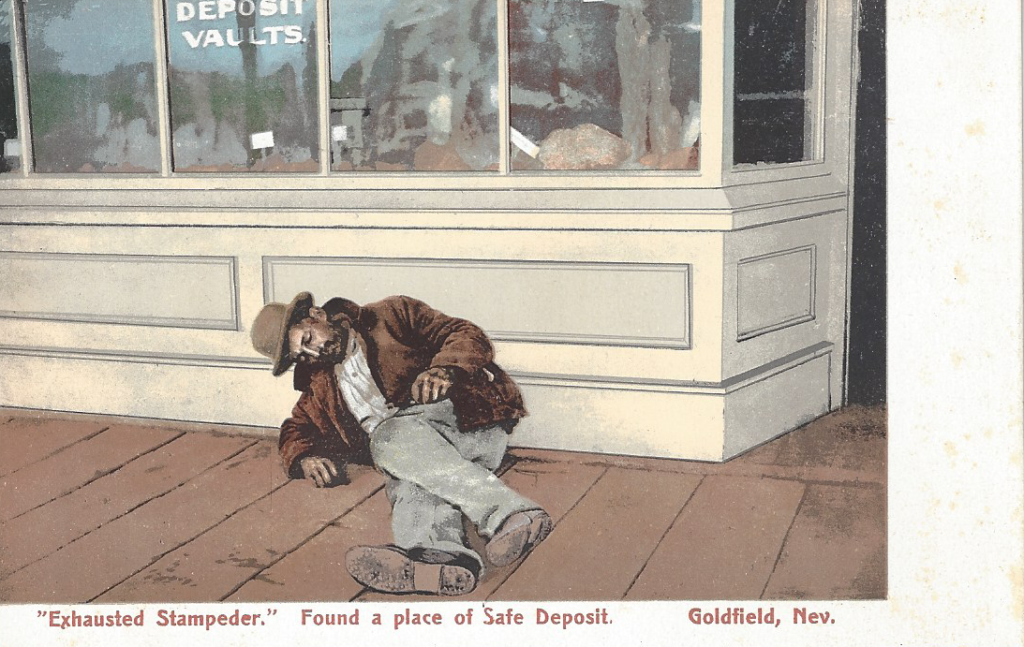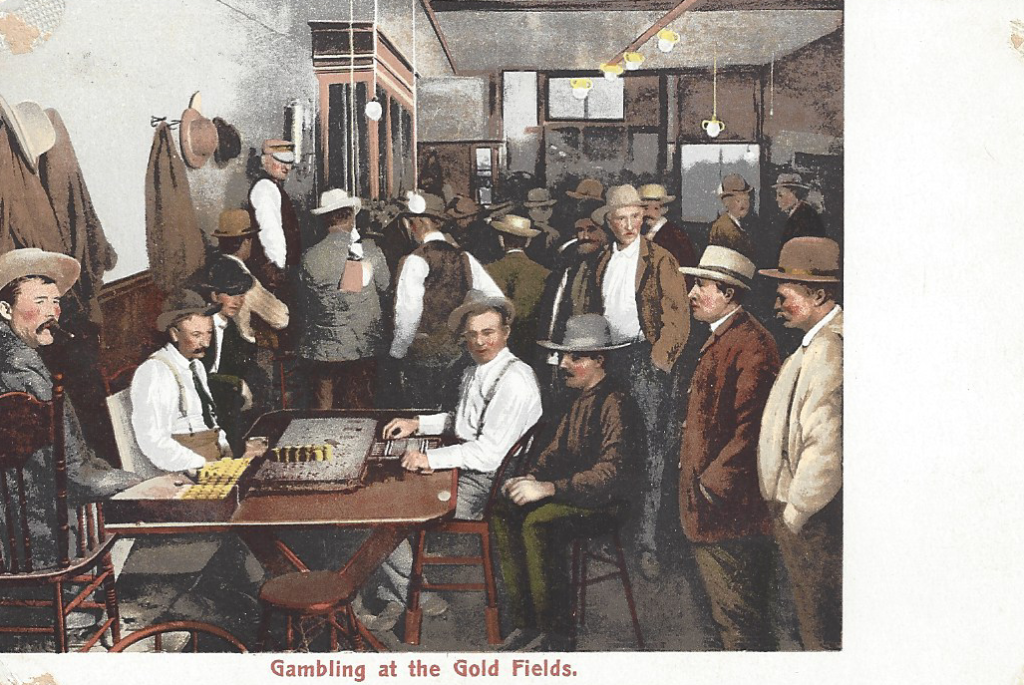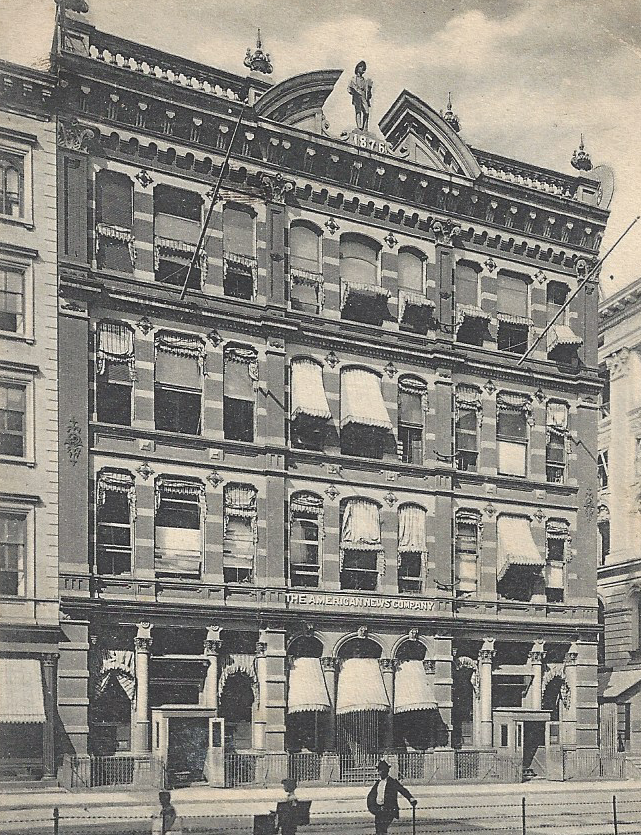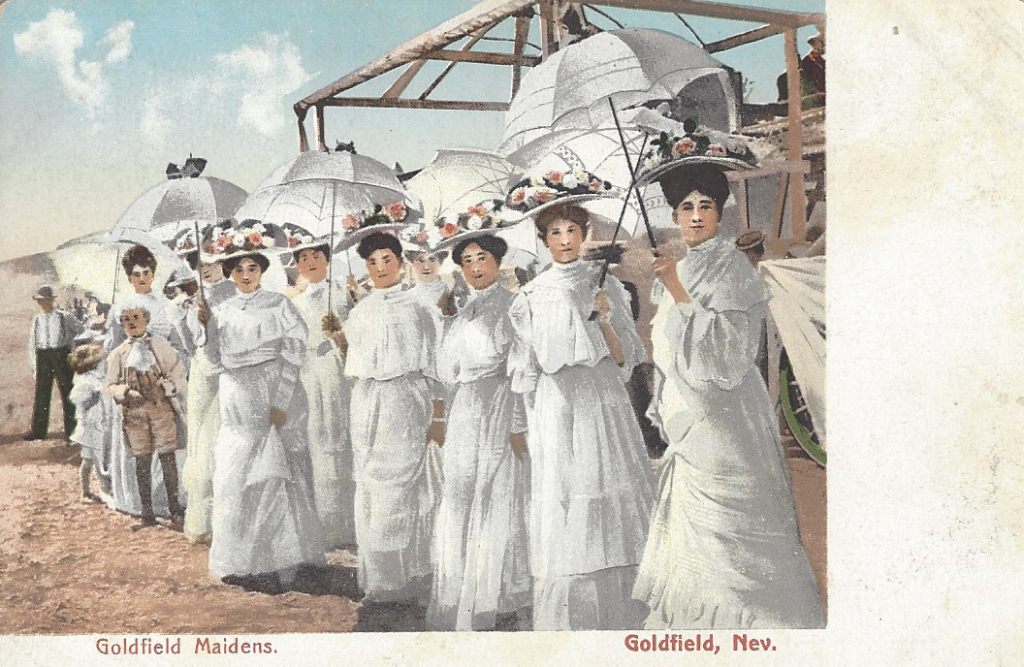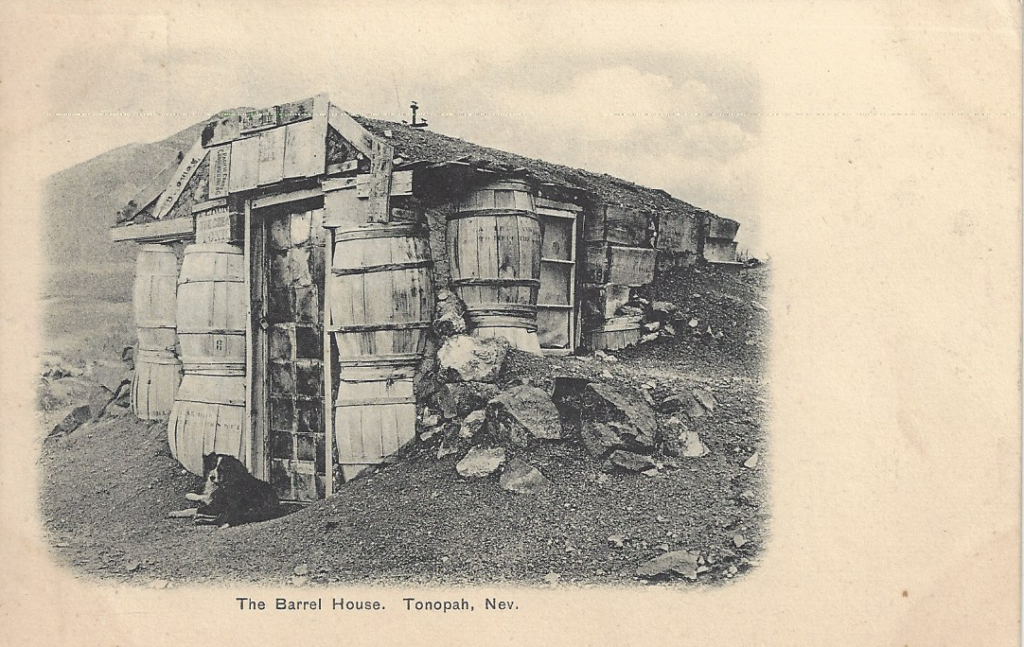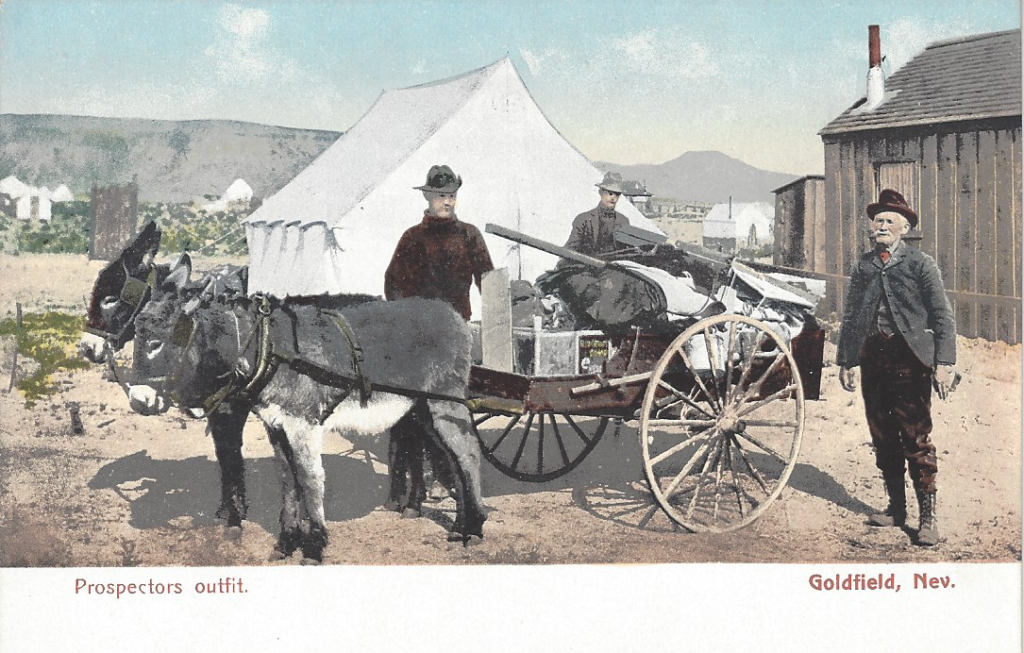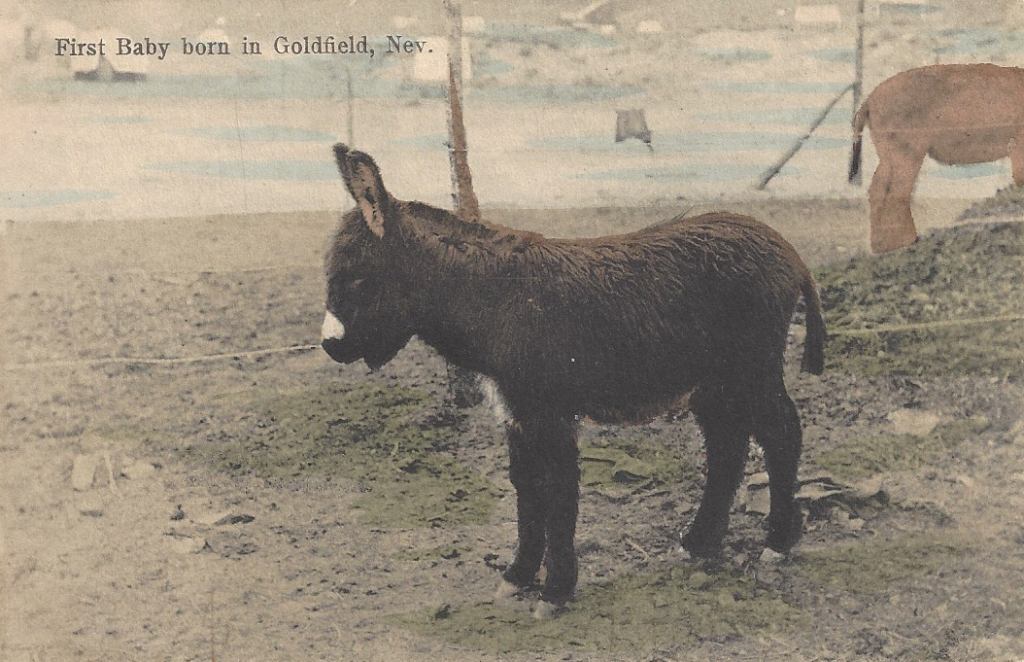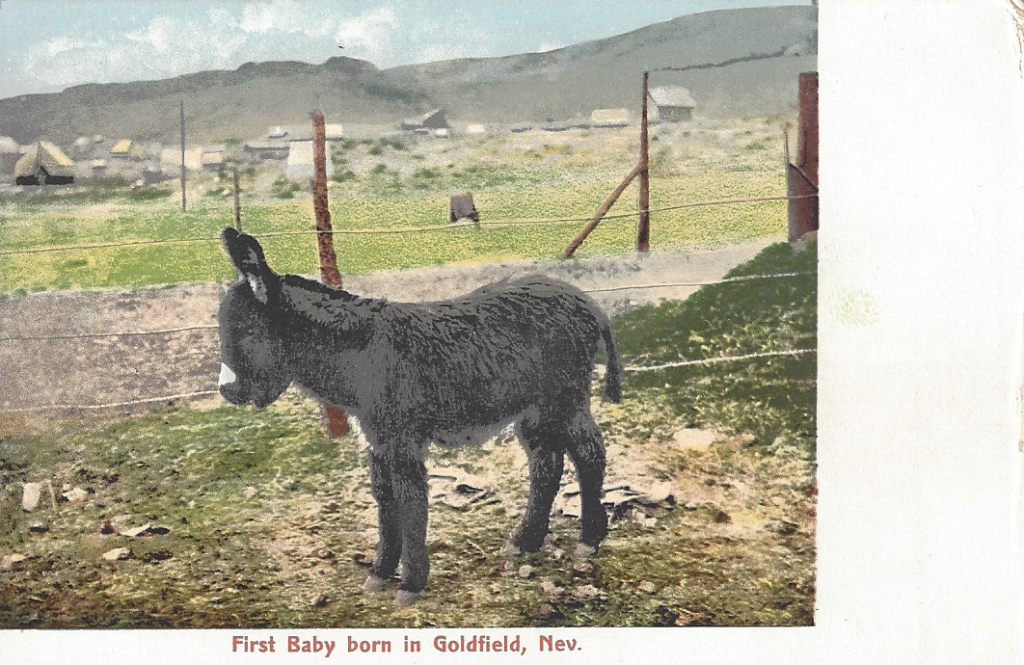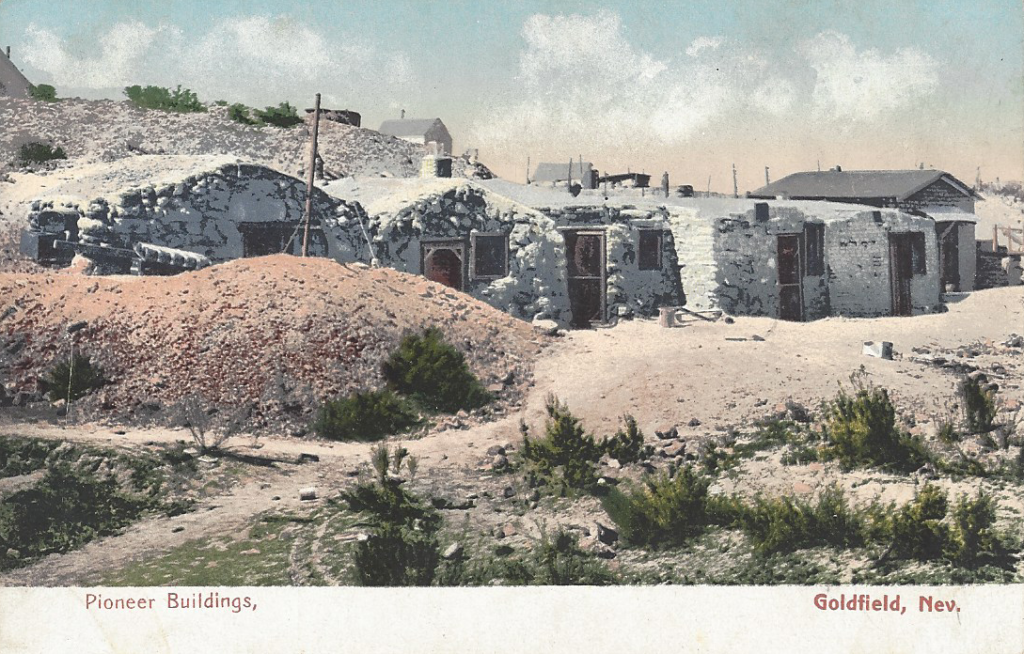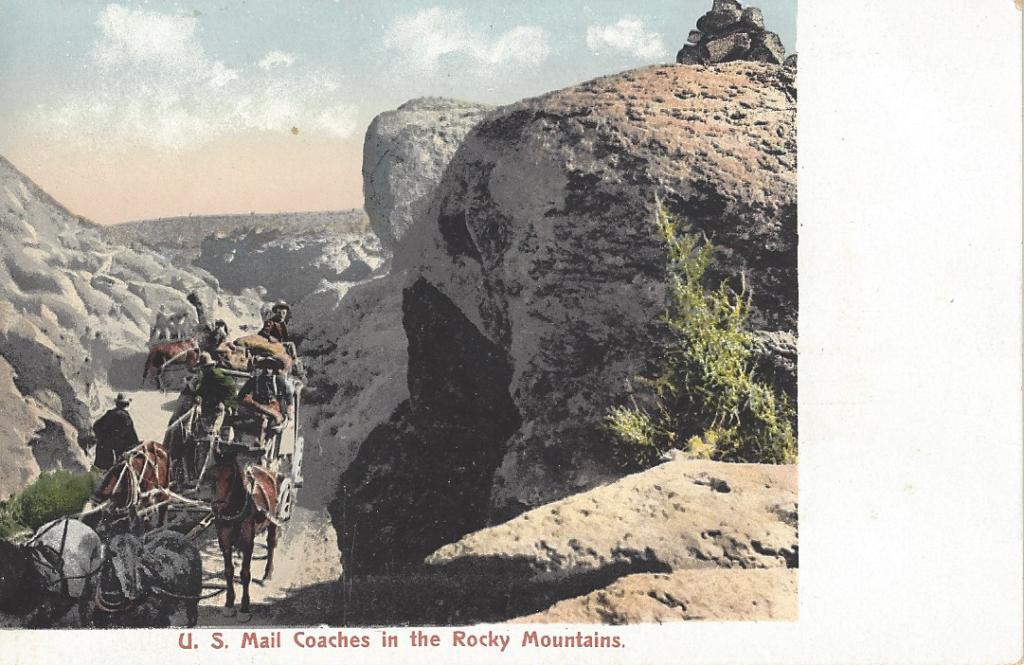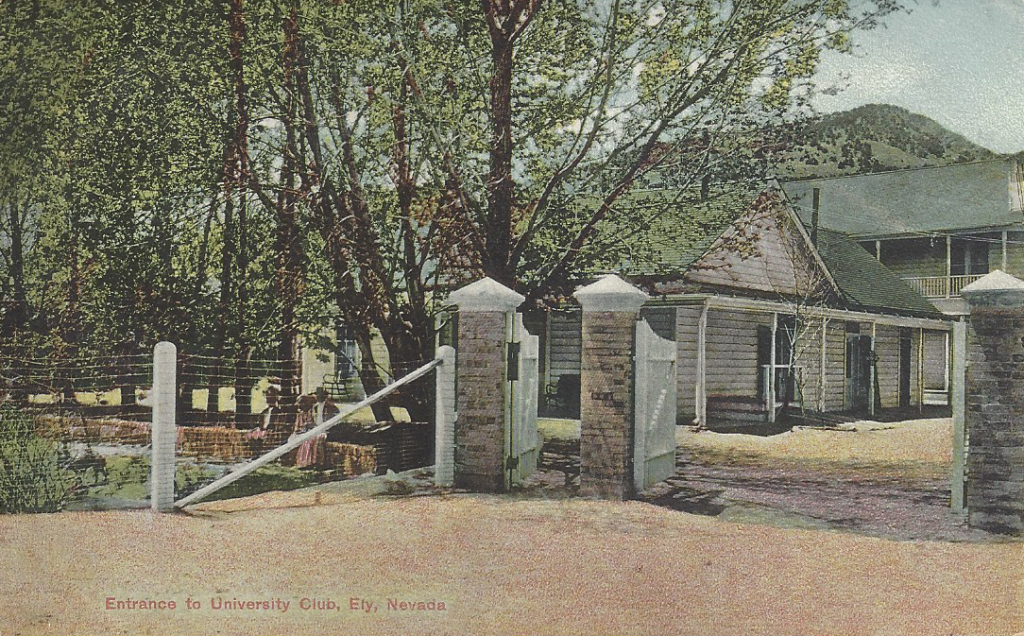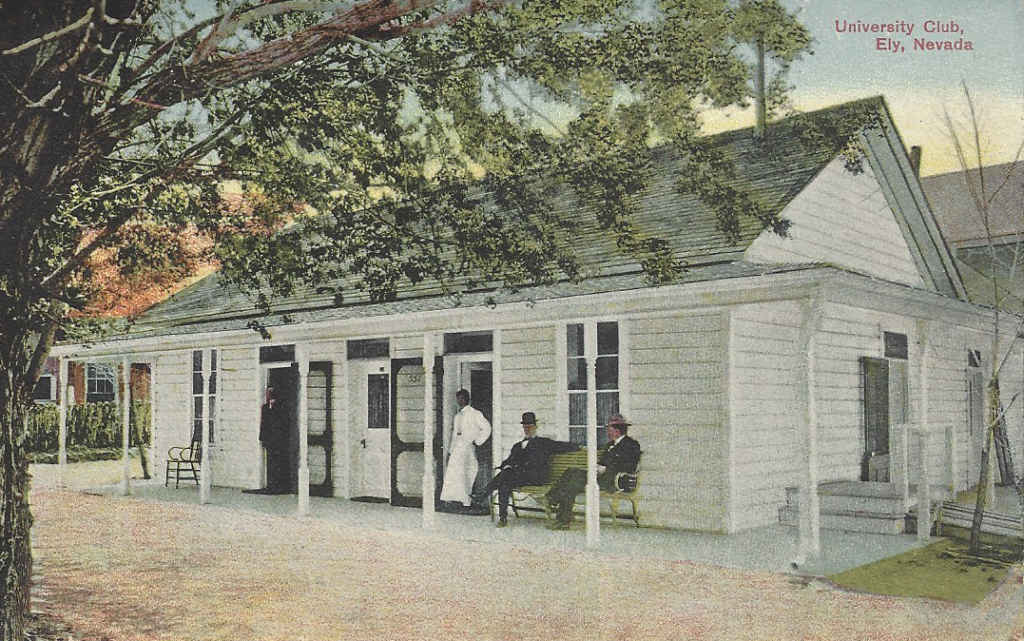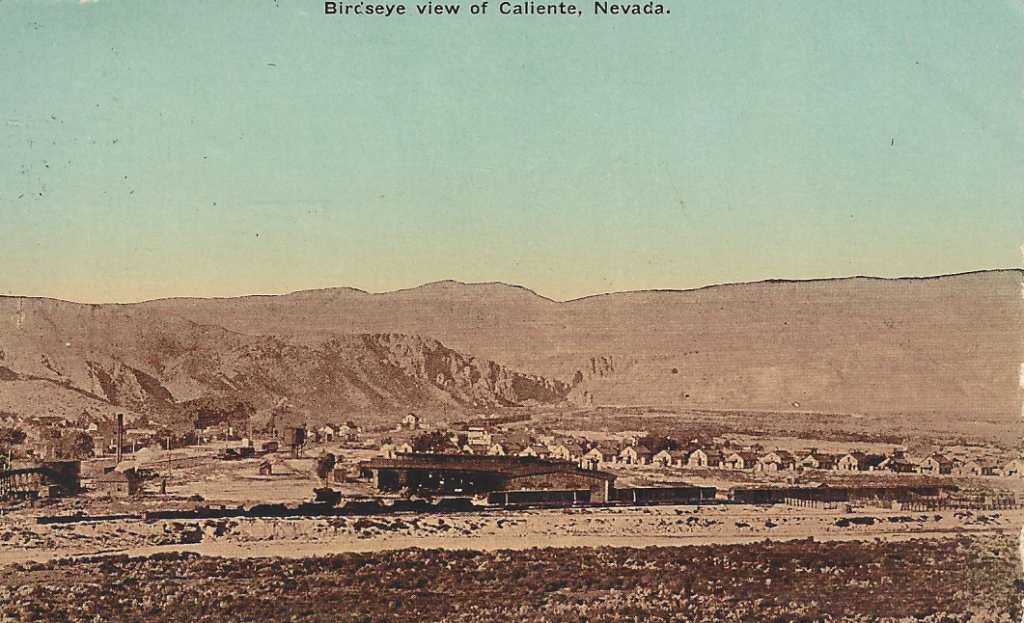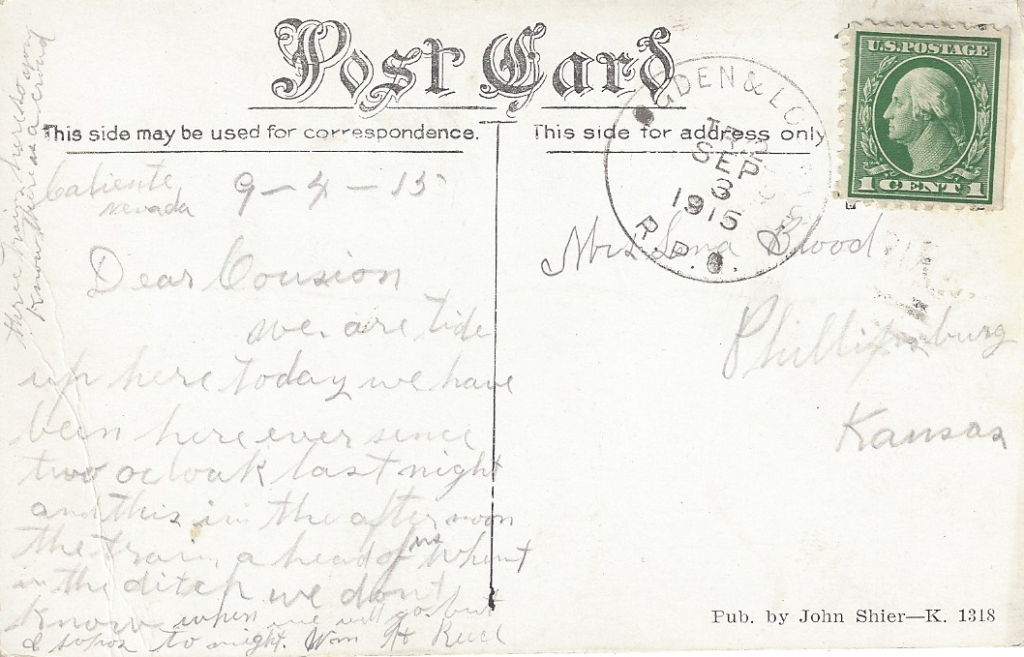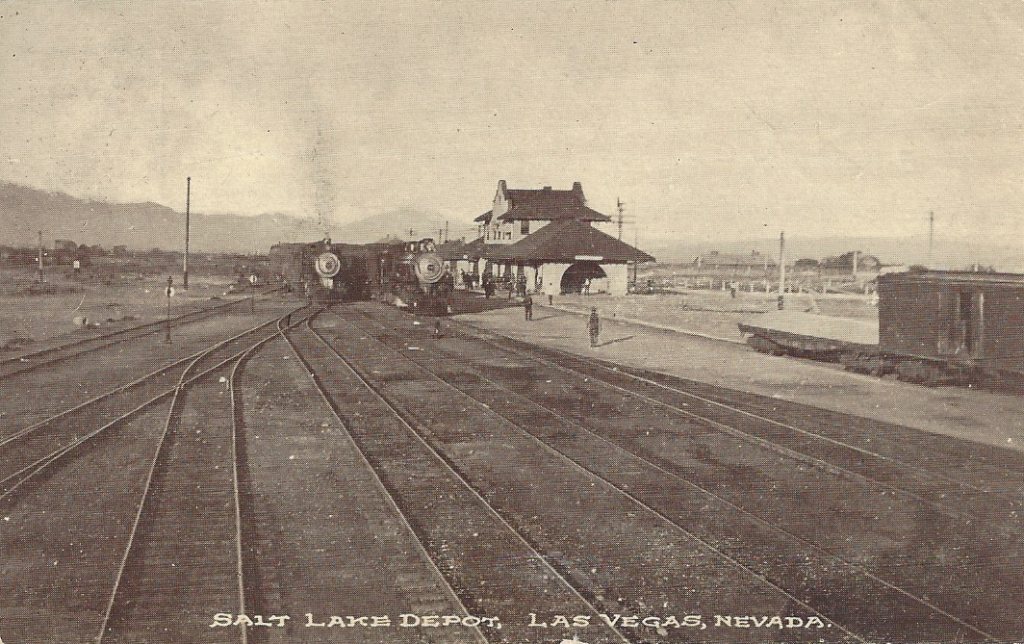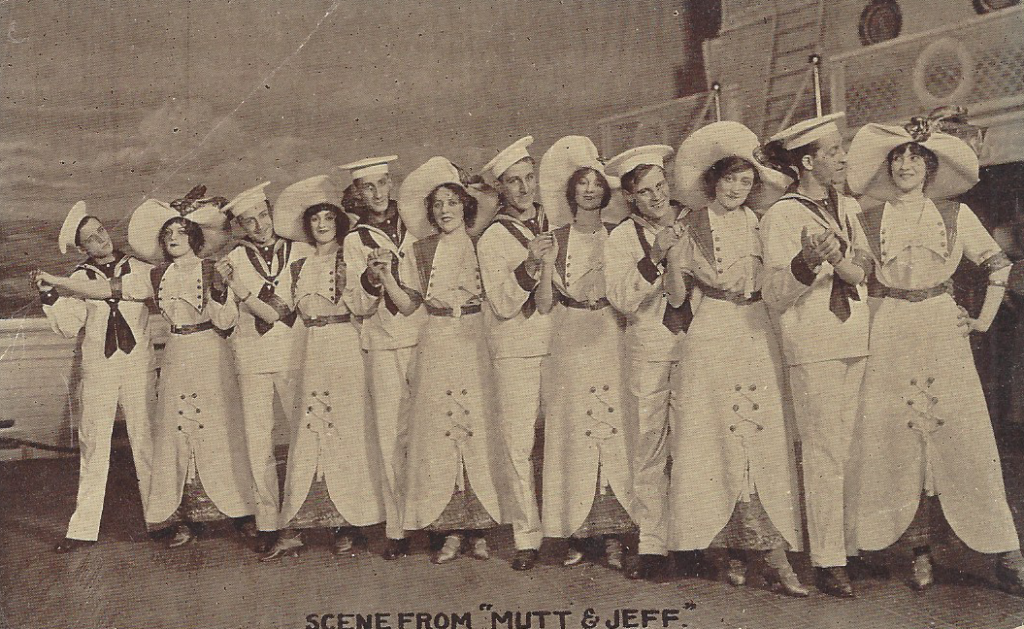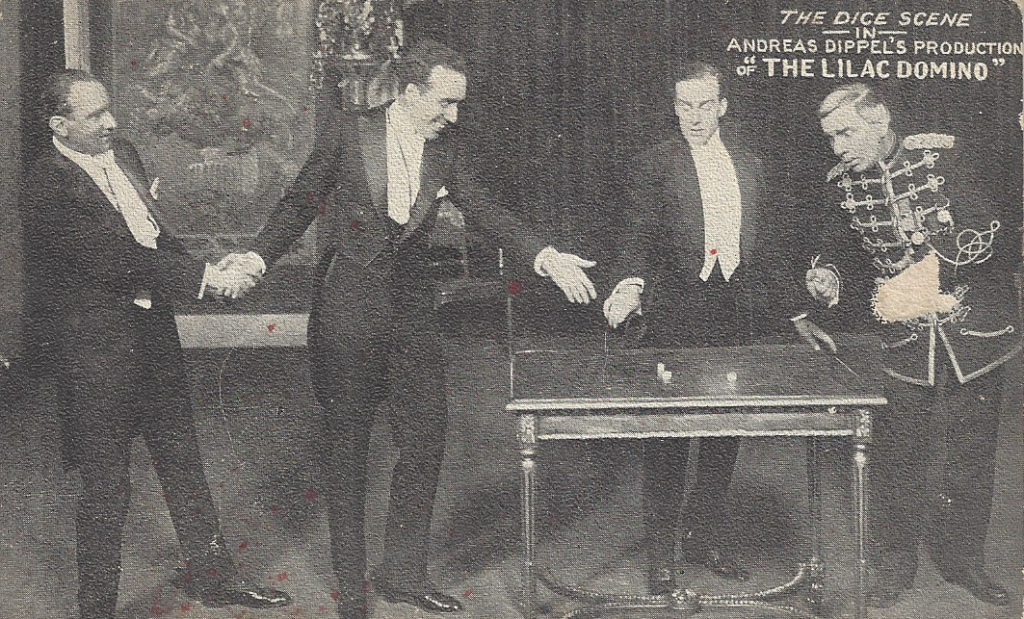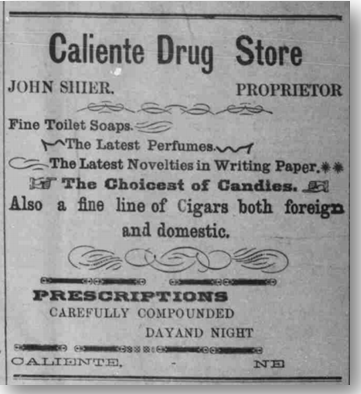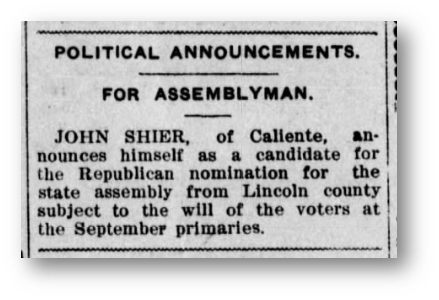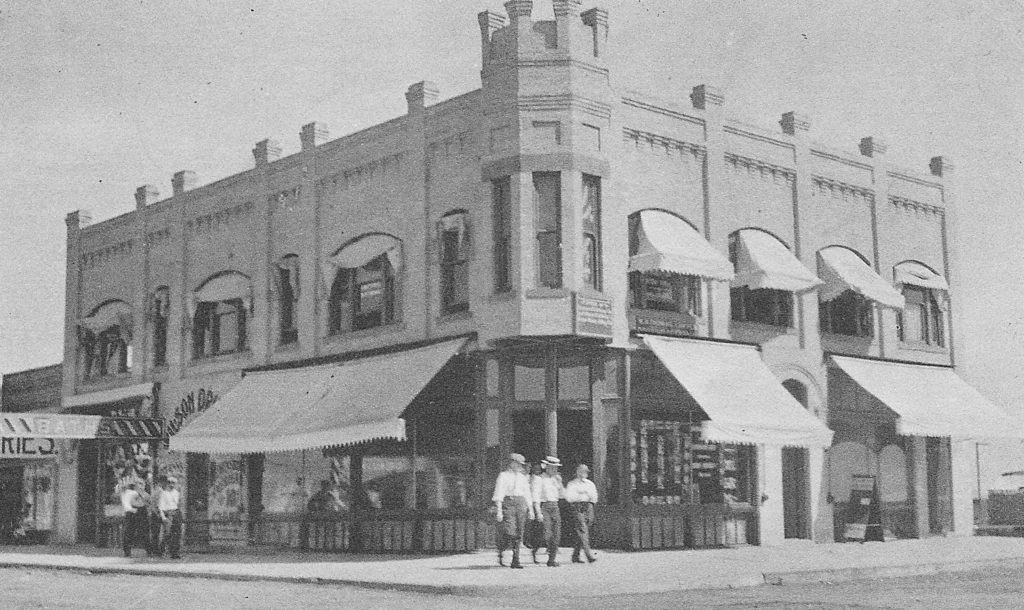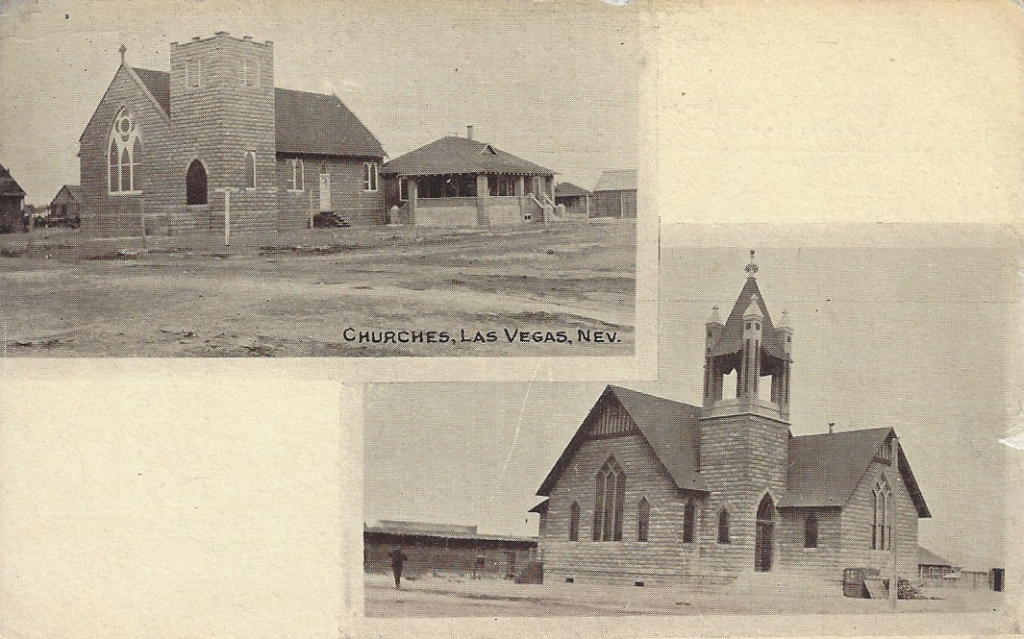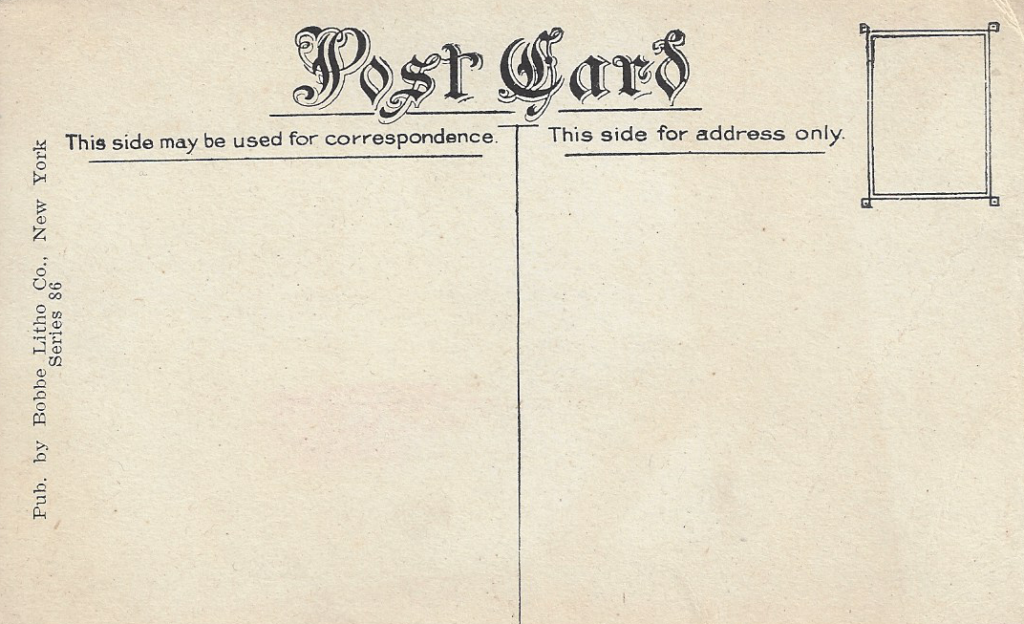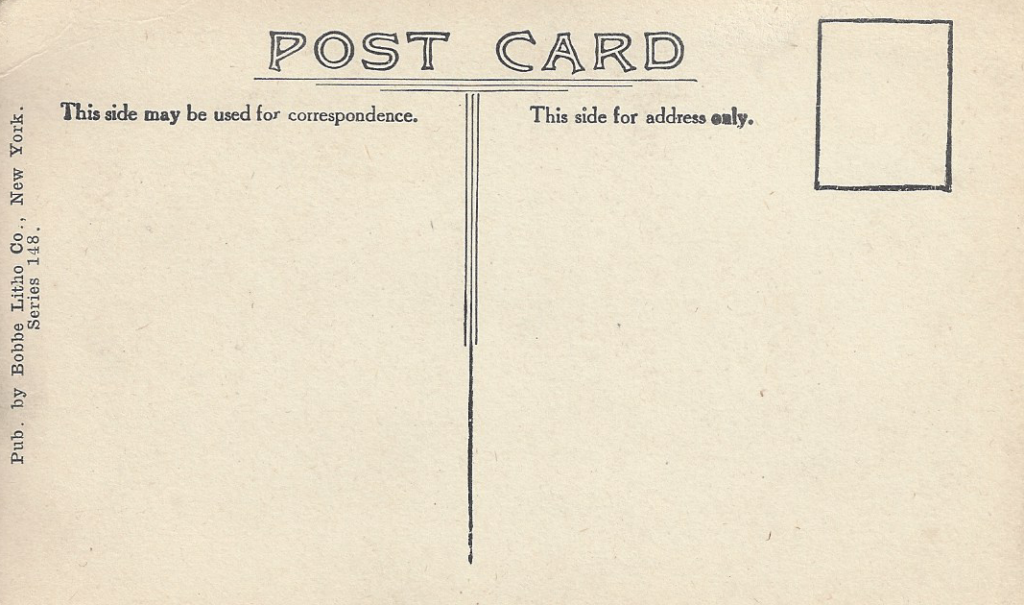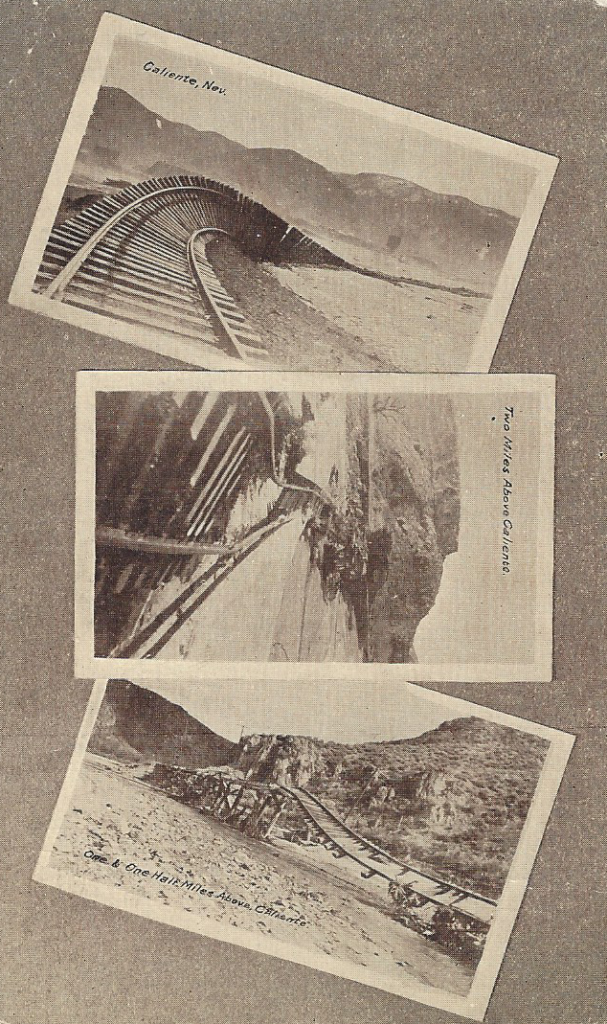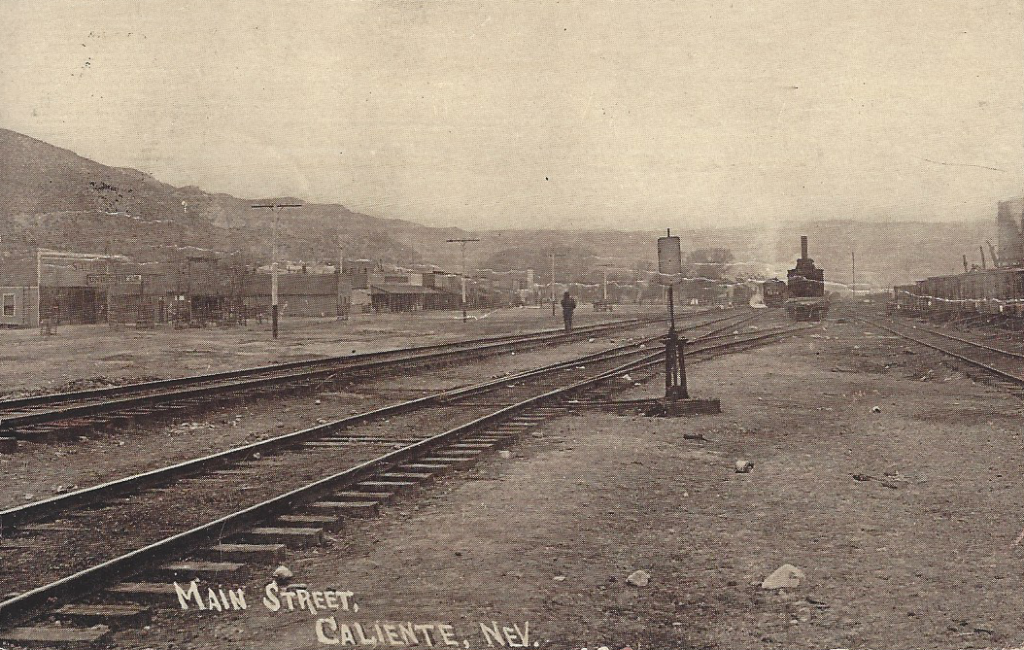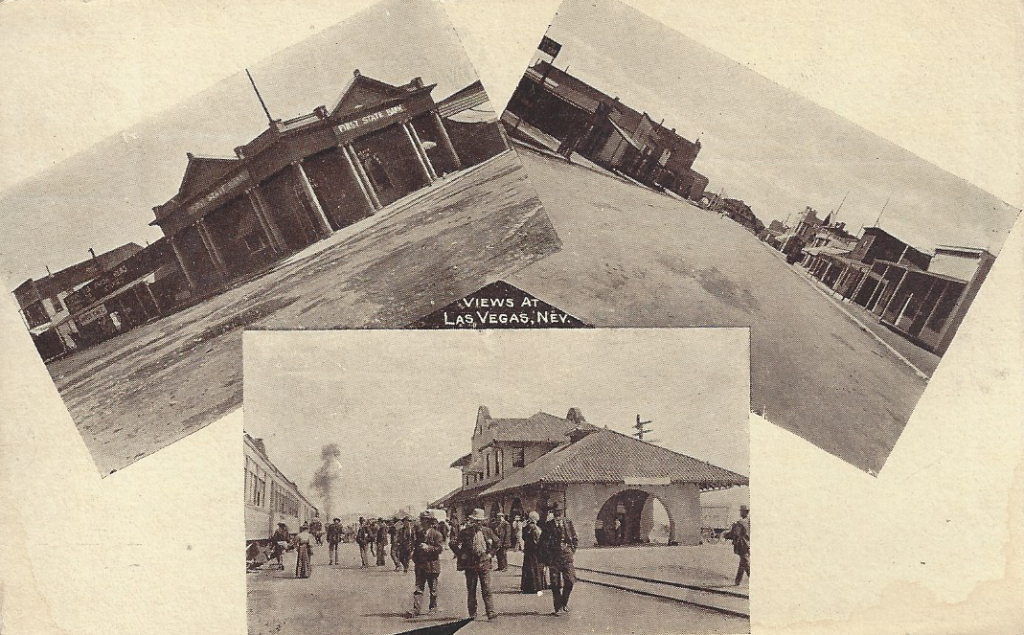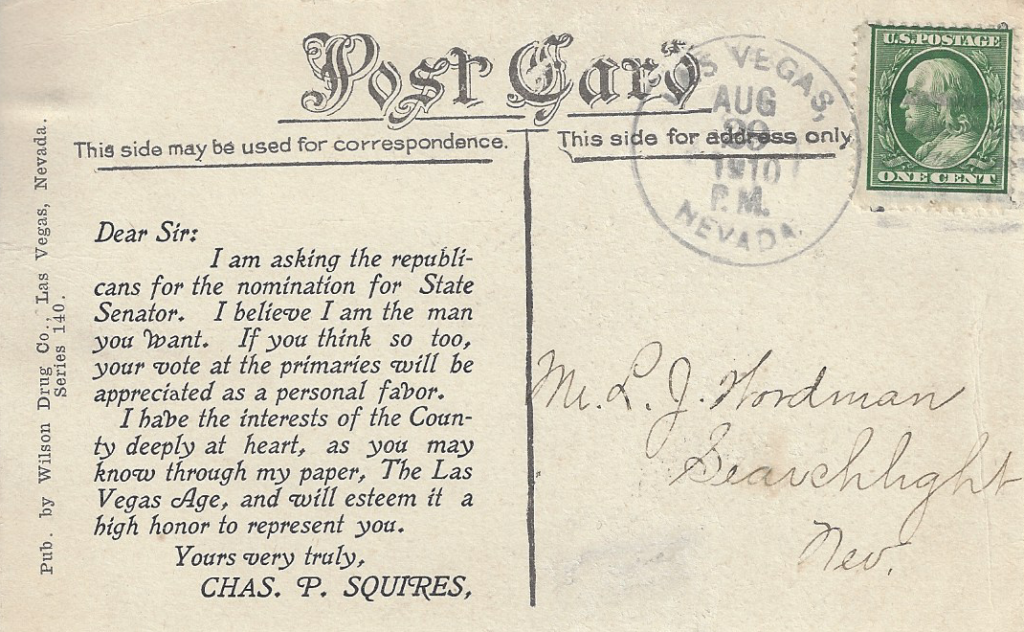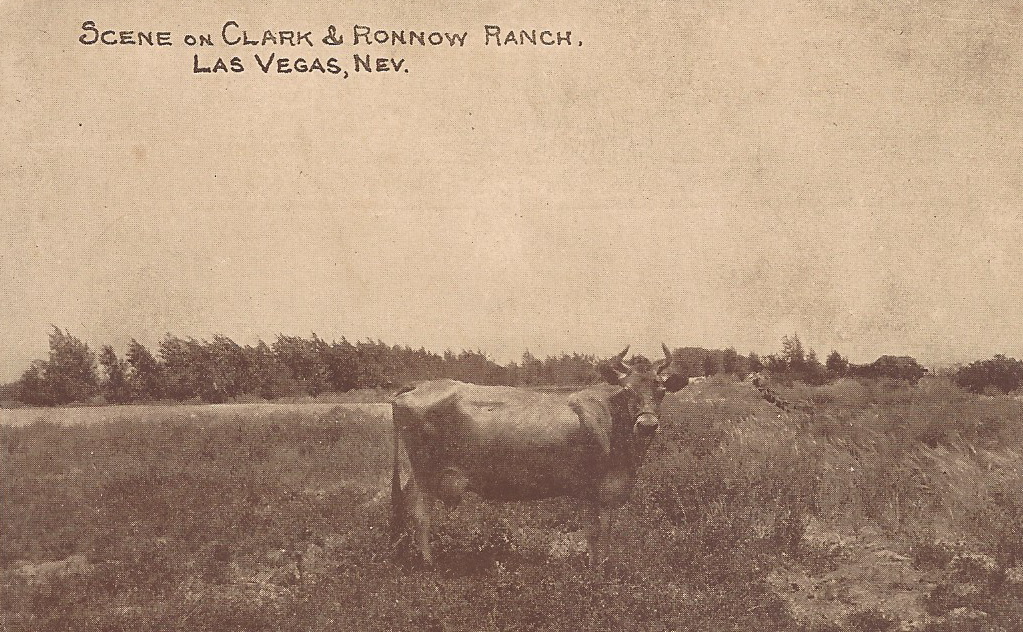Harvey Bynum
“Notorious”? “Visionary”?
Researching the history of a Las Vegas restaurant, night club operator and gambler.
A work in progress By Robert Stoldal
(Updated January 23, 2019)
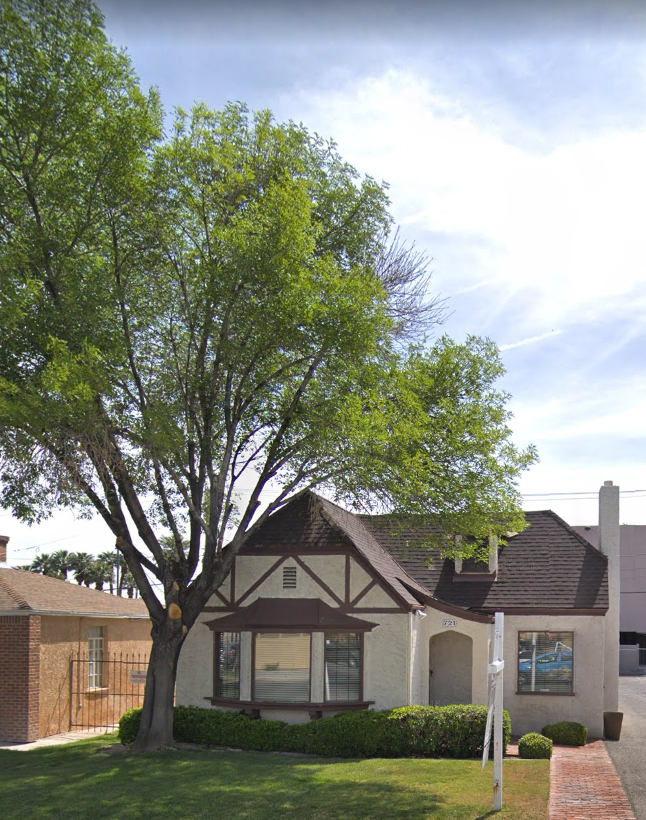
A guide for a walking tour of the Las Vegas High School Historic District, produced by the city of Las Vegas, contains the following statement; “721 South 6th, Tudor Revival, 1937. Built by Lewis E. Rowe, well-known Las Vegas High art teacher, the house was rented briefly by Harvey “Red” Bynum, a notorious gaming figure and Davey Berman, Bugsy Siegel’s
The Dean Legal Group Ltd now occupies 721 South 6th. As seen in this Google street image.[i]
Bynum “Notorious?” A “partner” of Berman and Siegel? Who was this guy? And why is he renting, even “briefly,” the home of a high school “art teacher?”
From, http://www.merriam-webster.com/dictionary/notorious, we get “no·to·ri·ous adjective \nō-ˈtȯr-ē-əs, nə-\ : well-known or famous especially for something bad. Full Definition of NOTORIOUS: generally known and talked of; especially: widely and unfavorably known.” [ii]
Here’s another one from Dictionary.com. No·to·ri·ous. /noʊˈtɔr i əs, -ˈtoʊr-, nə-/ Spelled [noh-tawr-ee-uh s, -tohr-, nuh-] adjective. 1. Widely and unfavorably known: a notorious gambler. Synonyms: infamous, egregious, outrageous, arrant, flagrant, and disreputable. Origin: 1540–50; Medieval Latin nōtōrius evident, equivalent to nō (scere) to get to know.” [iii]
So, according to the City of Las Vegas, Harvey Bynum was “well known or famous especially for something bad,” or “widely and unfavorably known: a notorious gambler. Synonyms: infamous, egregious, outrageous, arrant, flagrant, and disreputable.”
O.K., using the Medieval Latin source of notorious, we will “get to know” Harvey Bynun the “notorious gambler and partner of Dave Berman and Bugsy Siegel.
But first, a word from someone who knew Bynum personally; Charles P. “Pop” Squires.
Squires, sometimes called the “Father of Las Vegas,” arrived in southern Nevada in the spring of 1905. For more than three decades he owned and operated the Las Vegas Age newspaper.
At the age of 93, after seeing Las Vegas from a desert landscape to the Las Vegas Strip Squires died in 1958. (At one point Squires owned the land underneath the Flamingo Hotel.)
In 1953 Squires wrote of Bynum; “Just the other day, I met an old friend, Harvey Bynum. Harvey established and operated several nightclubs which in their day were favorites of Las Vegas home folks, and which in a way set the pattern for the great hotels and nightclubs of today.” [iv]
Depending on one’s vision, Bynum was either a “notorious gaming figure” who was in business with mobsters, including Bugsy, or he was liked by “Las Vegas home folk,” and it was his vision that ”set the pattern” that formed the foundation for Las Vegas..
Who was Harvey Bynum?
Harvey Alman Bynum was born August 25, 1889 in Jonesboro, Craighead County, Arkansas.
Seventeen years later he was reported to be in the one year old town of Las Vegas.
Bynum in Las Vegas in 1906?
Starting in 1939 newspapers began to report Bynum was in Las Vegas in 1906.
A story in the March 13, 1939 issue of Squire’s newspaper said Bynum was managing the “91 Club” out on the highway to Los Angeles that would become the Las Vegas Strip
The club, formerly the Pair O’ Dice was now owned by Guy McAfee noted Los Angeles gambling and prostitution kingpin.
In the article Squires wrote when he was seventeen Bynum “was one of the pioneers of Las Vegas having spent some time here as early as 1906.”[v]
Squires who was in Las Vegas starting in 1905 remembered “Harvey first came to this town about 1906 and this has really been home ever since.” [vi]
In February of 1945, the Las Vegas Review Journal printed, “Harvey Bynum, pioneer Las Vegas resident, who came here first in 1906, is back.”[vii]
In March of 1946 a newspaper report included, “Bynum is well known in Las Vegas as he came here in 1906.”[viii]
A review of Las Vegas newspapers between 1905 and 1907 reveals no mention of Bynum.
By his mid-20’s Harvey has found his future.
In 1916, we find Bynum as the manager of the “Dunbar’s Restaurant” at the “New Savoy Hotel” in Erie, Pennsylvania.[ix]
The 1917 Erie, Pennsylvania City Directory lists the “Bynum Bros.” Harvey and Barney as having a restaurant at 630 State Street.
World War One would delay Bynum restaurant plans.
The war in Europe had been going for several years before April 6, 1917, when the United States declared war on Germany.
Six week after the declaration Bynum appeared at the draft office in Illinois.
On the army registration form he listed his “present trade” as “restaurant business” with current plans to “open at Peoria, Illinois.” On the form, dated May 29, 1917, the registrar described Bynum as “tall” with a “medium build” with “red hair” and “gray eyes,”
Bynum was 27 years old.
Like many people with red hair, Bynum would pick up the nickname “Red.”
Bynum entered the army and served until after the war and received an honorable discharge.[x]
Next we find Bynum in Ohio.
The U.S. Census says Bynum was living in Akron, Ohio in February of 1920. He listed his business as a “restaurant” that he “owns.”
A 58 year old Bette Bynum was living with him at the time.
Bynum moved west to Los Angeles in the early 1920’s and by 1924 he had married “Billie” Meredith and they had a daughter Elizabeth Jean.[xi]
It appears that Bette is Billie.
Shortly after the marriage Bynum moved his family east where he managed the Breakers Sea Food Cafe in Oklahoma City. [xii]
In 1925 Bynum is on the road again. He heads west to Reno. At this point, no record has been uncovered of what the now 35-year-old Bynum did in Reno.
In June of 1926, an Oklahoma newspaper did report; “Mrs. H. A. Bynum and little daughter, Elizabeth Jean, off to Reno, Nevada, where she will join her husband and make her future home.” [xiii]
The Bynums were in Reno for close to two years.
While casino style gambling was still illegal in Nevada in the late 1920’s gambling on card games, poker etc. was legal. In addition some forms of slot machines were legal and licensed.
Before, during and after Bynum and his family were in Reno, Jim McKay and has partner Bill Graham ran the underworld. This included most of the gambling, legal and illegal as well as the bootlegging operations.
In this wide open town Bynum added gambling to his skills operating a restaurant.
By 1928, the Bynum’s had moved back to California and were living in the Pismo Beach area.
The couple was also known to have made “a trip to Nevada” in August of that year. [xiv]
Bynum- 1930 Census April
In the 1930 U.S. Census, Bynum and his wife “Billie” and daughter Elizabeth Jean were living in the city of Los Angeles, California. The census was taken on April 2 and 3.
At that point Bynum told the census taker he did “restaurant work.” It was not long after that declaration he was arrested.
Bynum and Bear Valley, California Gambling Raid 1930 June
In June of 1930, law enforcement agents were tipped there was a “miniature Monte Carlo” casino operating in Bear Valley, California.
Located about fifty miles west of the Nevada State line from Topaz Lake, Bear Valley would be the subject of regular arrests for illegal gambling.
On June 22, 1930, members of the San Bernardino sheriff’s office raided the lodge. Deputies found two women gambling, arrested six men, and confiscated three dice tables, blackjack and a roulette tables and “400 gallons of whisky.” [xv]
Bynum was among those arrested. He pleaded not guilty to the gambling charges. [xvi]
A month later, his attorney convinced a jury that the gambling operation was not for real, they were just props for a Fourth of July celebration. And that the event was sponsored by the Bear Lake Chamber of Commerce.[xvii]
Free of the gambling charges Bynum and moved to Las Vegas. Eight months after he arrived gambling, at the end of March, 1931, would once again be legal in Nevada.
While the rest of the United State was suffering from the Great Depression, Las Vegas was booming. Forty miles southeast of the city, several thousand men were working on the Boulder Canyon Dam Project, someday to be called Hoover dam.
When the first shovels hit the ground at the dam site, gambling and the sale of alcohol was illegal.
While gambling became legal in the spring of 1931, the legal sale of alcohol was still a couple of years away.
And despite the efforts of federal authorities, speakeasies were still the shortest distance between dam workers and their pay checks.
During the dam days a string of saloons could be found on both sides of the newly paved highway between the Las Vegas and the hill leading up to Railroad pass.
There were also a couple of upscale speakeasies on U.S. 91 outside the city limits.
In 1931, on what would become the Las Vegas Strip, there were a couple of auto camps, a gas station and two nightclubs, The Red Rooster, and the Pair O’ Dice.
They were among the first clubs in southern Nevada to received licenses to operate table games.
The first to open was the Red Rooster, located about where the sidewalk is in front of the Mirage Hotel Casino.
The Pair O’ Dice night club was second. It was located on the west side of the strip, just north of where the Wynn Hotel-Casino is now located.
The Pair O’ Dice became the Last Frontier Hotel-Casino, then the New Frontier Hotel-Casino, then the Frontier Hotel-Casino and now an open field and owned by Wynn Resorts.
Having trouble competing with the nightclubs along the Boulder Highway, in 1931 the builders of the Pair O’ Dice leased the operations to Bynum.
In between Bynum’s bust in 1930 and his plans to take over the Pair O’ Dice, the gambling community was focused on the activities of a California gambling and bootlegging family, the Cornero’s.
While Tony Cornero was still in federal prison his family opened up the Meadows hotel-casino in 1931along the highway to the dam construction.
Bynum and the Pair O’ Dice
About five miles southwest of the Meadows another nightclub was having an “informal opening.” The builders and owners of the Pair O’ Dice, invited the public to see the new night club, gambling hall and restaurant on the evening of July 4, 1931. [xviii]
Two months later its owners said they were closing the resort for remodeling; the “casino is being remodeled and redecorated” and “will reopen on a larger scale as soon as the contemplated improvements are completed.”[xix]
Another three months would elapse before the Pair O’ Dice would reopen. At this point, Bynum stepped in feeling he could make a success out of the shuttered club.
It is possible that after his bust in California, Bynum came to Las Vegas to help the Cornero’s open the meadows. A 1945 story in the Las Vegas Review Journal reported says Bynum was “connected with the Meadows in the days when that club was the bright spot of Las Vegas’ night life.”[xx]
While the timing is right, and the Cornero’s hired well known gamblers to help with their casino operation, no other references to Bynum and the Meadows has been uncovered.
Beyond being able to get a glass of illegal champagne or a shot of whiskey, Bynum had to come up with reasons people would drive several miles on the desert highway, past the city limits, to the Pair O’ Dice.
Bynum developed a plan to re-open the new Pair O’ Dice on New Year’s Eve. Rather than compete with the clubs along the Boulder Highway catering to the dam workers, Bynum went up scale.
He sent out a press release and placed several advertisements promoted the re-opening of the night club.
Unable to directly tell his potential customers he was serving booze, in his press release he said, “An unusual catering service will provide refreshments;”
“Re-opening with a “Bang,” the Pair O’ Dice, luxuriously appointed resort on the Los Angles highway about three miles south of this city, is planning a gala New Year’s eve celebration. According to the management, special music and entertainment has been arranged for that evening, an unusual catering service will provide refreshments, and the crowd will be given confetti, horns, serpentine caps, and all the customary New Year’s equipment. The resort will remain open, entertaining nightly after January 1.”[xxi]
The display advertisement for the New Year’s Eve “re-opening” of “Pair O’ Dice” promised “a brand new show with Howard Jones Hi-Hatters featuring Wm. Haines in a Study in Black and White” and “Sally” a life-size pint. Plenty O’ Prices, Plenty O’ Surprises say goodbye ’31 and Help ’32 with us at Pair O’ Dice.”
While Jones and his Hi-Hatters continued to entertain at the Pair O’ Dice, Haines made only the one New Year’s Eve appearance. “Wm. Haines,” was actor William Haines.
After the New Year, Bynum continued to run advertisements in Las Vegas newspapers. In the January 5, 1932 edition of the Las Vegas Age Bynum included his name; Harvey Bynum was “in charge of casino,” and “Oscar Klawitter” was “in charge of Cabaret.” [xxii]
Ten days later, Bynum and Klawitter, who was listed as “Oscar Witter,” announced; “When you visit Las Vegas you simply can’t afford to miss seeing Las Vegas’ most popular, most queue, most interesting place of entertainment, featuring American, Italian and Spanish Dishes.”[xxiii]
After three weeks, “playing to a packed house,” a new act was added to the Hi-Hatters show. Bynum and Klawitter said the band “Four Aces and a Queen” was on bill supplying patrons with “hot music.” [xxiv]
The first week in February, 1932 included a statement from Bynum the recent remodeling and redecorated was not enough, and that he was enlarging the dance floor and dining room to accommodate crowds of 150 people.[xxv]
After talking to Bynum a newspaper reporter wrote, “the popular resort has been handicapped by lack of room to handle larges parties and that the increased patronage of late had made it necessary to double the space available. [xxvi]
On Wednesday morning of February 3, Bynum said “by Saturday night we will be able to handle parties of 150 comfortably.” [xxvii]
Two weeks after opening “Four Aces and A Queen,” the resort began promoting patrons could dance “the entire evening to the tunes” played by the expanded “Five Aces and A Queen Orchestra.”
For sixty days Bynum ran the Pair O’ Dice, then he made an unexpected move.
On the evening of February 29, he said was leaving “immediately for Los Angeles where he has other interests.” [xxviii]
The next day H. H. “Red” Switzer took “immediate possession” of the club picking up Bynum’s yearlong lease. [xxix]
By this point in his life, Bynum’s nickname was also “Red.”[xxx]
Nine months later on January 4, 1933, Switzer closed the club. He said, “The people of Las Vegas have been fine and given us a good break, but there’s just not sufficient business here to enable us to get by.”[xxxi]
Assisting in his decision to close the Pair O’ Dice was his arrest a month earlier for selling alcohol resulting in the club being listed as a “common nuisance.” [xxxii]
Between the spring of 1932 and the winter of 1935 Bynum’s whereabouts is currently unknown.
Unless he was working on a gambling boat off the California coast under the name, Robert Bynum.
A Robert Bynum was arrested when the gambling ship Monte Carlo was raided off the coast of Long Beach, California.
Santa Anita Inn and Swimming and Riding Club
November 1935 to February 1936
In the November 15, 1935 edition of The Arcadia, California Tribune, we find Bynum announcing the “Santa Anita Inn and Swimming and Riding Club,” will be “formally opened sometime between November 28 and December 10.” [xxxiii]
The club was located less than a mile from the Santa Anita Race Track.
Bynum was quoted as saying “the reasons we are behind schedule in opening the inn is because we want to give Arcadia the finest eating rendezvous in the southland, and would rather spend more time in creating such an establishment than to rush to the opening date.” [xxxiv]
The newspaper reported “the local inn will cater only to a clientele of distinction” as “during the racing season, nay celebrities of the movie colony are expected to gather here.” [xxxv]
Shortly after Bynum opened police raided the establishment. A front page story in the Arcadia newspaper said the “surprise raid” was part of a “clean up campaign.” [xxxvi]
“Cracking down hard in his first attack to rid Arcadia of gambling houses,” the newspaper reported, “Chief of Police Don Ott and five fellow officers last night swooped into the exclusive Santa Anita Inn annex, arresting tow on counts of operating gambling tables, and seizing three tables.” [xxxvii]
The newspaper reported the police chief “arrested Harvey Bynum, owner of the gambling tables and his employee, Max Silverman, who at the time of the attack was raking in chips at the crap table. A roulette table and blackjack table were also taken by the police and are now at the station.” [xxxviii]
Police said “15 people were in the finely furnished room at the time of the unexpected visit,” which “had been thoroughly redecorated into a gambling establishment.” [xxxix]
Police, according to the Los Angeles Times told the newspaper that “besides the equipment taken a large desk” was found to “contain complete records of the nightly take and the amounts won and lost by various regular patrons” was recovered and taken in as evidence. [xl]
Bynum was released “on payment of $500 cash.” [xli]
He would soon take his family back to his familiar haunts in Nevada and settle in while his only child attended Las Vegas High School.
In 1953 newspaperman Squires said he remembers “Harvey came to this town about 1936” and this has really been home ever since. He has a daughter, Jean, who grew up and was educated in Las Vegas.” [xlii]
Squires says his friend “was very prominent and active as a cafe and nightclub owner.” He added, “Harvey established and operated several nightclubs which in their day were favorites of Las Vegas home folks, and which in a way set the pattern for the great hotels and nightclubs of today. Harvey really was a leader in that line.” [xliii]
Over the next decade Bynum was owned, or operated several night clubs, restaurants and gambling operations in the Las Vegas Valley.
Bynum said he owned the Dunes Club on the Boulder Highway from March 1938 to February of 1941.[xliv]
During this same time frame, Bynum was connected to McAfee in the Pair O’ Dice.
After losing his criminal empire in Los Angeles, McAfee would go on to be one of the early gambling visionaries in Las Vegas.
Building and opening the Golden Nugget, as well as believing the desert along the highway where the resorts, El Rancho Vegas and the Last frontier were located was part of the future.
Newspaperman Squires also believed that Bynum fit into the visionary category.
In addition to nightclubs along the Boulder Highway, Squires said Bynum owned and operate “China Town, a rather gay dining and dancing place well down on South Main Street.”
But it was his work with McAfee that put his name front and center.
Bynum opens “91 Club” March 15, 1939
On January 13, 1939, the Las Vegas Age carried a story with the caption “Ninety-One Club to be Elaborate.”
The story included the fact that the Pair O’ Dice was being “elaborately remodeled and the resort’s name would be changed to the “Ninety-One Club.” [xlv]
The story also revealed “the new resort is under the management of Mr. Bynam, who was one of the pioneers of Las Vegas having spent some time here as early as 1906.
Bynum’s name was misspelled initially in stories in both Las Vegas newspapers. [xlvi]
But it was not until a story appeared in the Las Vegas Review Journal on January 24, 1939 was the public informed the new club was owned by McAfee.
The story was titled “McAfee Interests Enter South Nevada on Large Scale today.” According to the newspaper McAfee’s attorney appeared before the Las Vegas City Commission and outlined McAfee’s plans for both downtown Las Vegas and in outside the city limits on U.S. highway 91.
Bynum opened Guy McAfee’s “91 Club” on March 15, 1939. Located on then U.S. Highway 91, the club is McAfee’s first known investment in Las Vegas. [xlvii]
Another day another misspelling his name;, the Las Vegas Evening Review Journal, in the March 15 story, printed, “Harvey Bymun, who has built himself a host of friends since his advent into Las Vegas, will be in charge of the gambling at the club, which will consisted of black jack, craps and roulette.” [xlviii]
The next day the Review Journal reported, “The opening of the “91 Club” last night marked one of the leading social events of the season in Las Vegas and many of the socially prominent Las Vegas residents were present for the gala occasion.” [xlix]
In addition to Mrs. Guy McAfee, among those listed were Mr. and Mrs. Walter Bracken, Mr. and Mrs. Wilbur Clark of San Diego, Mr. and Mrs. Leland Ronnow, Mrs. Robert Griffith, Mr. and Mrs. A. W. Ham, Mr. and Mrs. G. S. Wengert, Clark County District Attorney Roland Wiley, Assistant District Attorney Paul Ralli, Clark County Sheriff M. E. Ward, Clark County Deputy Sheriff Glen Jones, Judge and Mrs. Roger Foley, Las Vegas City Attorney and Mrs. Harry Austin, Las Vegas Postmaster Frank Garside and Mr. and Mrs. James Cashman. [l]
The newspaper reported “in the lounge where Harvey Bymun is the manager, the gambling tables and bar attracted many.” [li]
McAfee operated the club for about a year.
Bynum buys Cactus Gardens May, 1939
Changes names to Yucca Club by June, 1939
In May of 1939, Bynum, now publicly referred to as “Red” Bynum buys the Cactus Gardens.
At the time of the announcement the Cactus Gardens was located “on the old Meadows road,” and was owned by Paul Warner.[lii]
On May 19, 1939, Bynum said he planned to completely remodel the Cactus Gardens “using the western type of architecture.” [liii]
Bynum also announced in May of 1939 that he was going to change the name of the nightclub. He offered a price of $25.00 adding the name must have a “definite western” sound “to co-inside with the decorations and architecture of the place.” [liv]
The announcement included a biographical note on Bynum; “he has spent twenty five years as chef and steward of various kitchens and says he will personally supervise the food preparation and will specialize in good food.” [lv]
 Staying with desert plants, Bynum changed the name from Cactus Gardens to the Yucca Club.
Staying with desert plants, Bynum changed the name from Cactus Gardens to the Yucca Club.
The first menus for the “New Yucca Club” were printed on wood by the Las Vegas Review-Journal newspaper.
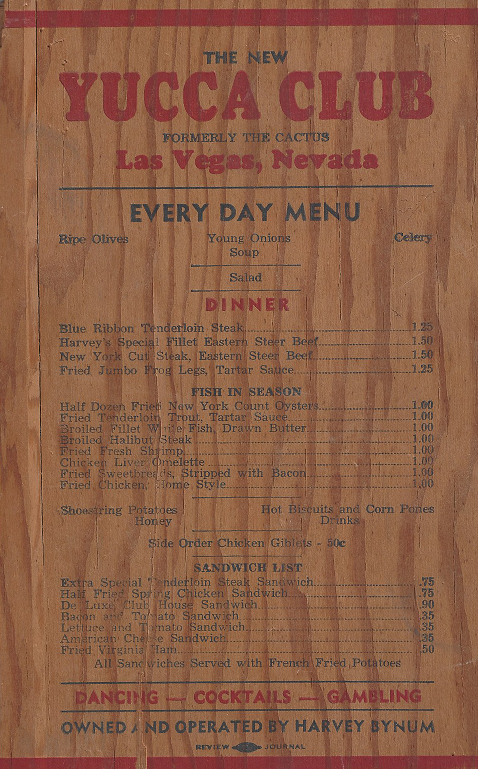
A side note -Confusion- Did Bynum already own a bar named the Cactus Garden at Cactus Springs or?
It is possible he changed to name because he owned or had leased another property on the “Reno-Las Vegas highway” known as the “Cactus Gardens,” at Cactus Springs.[lvi]
Or the Las Vegas Age reporter, known as “The Rambler” didn’t know the different between the highway to Reno and the highway to Boulder Dam. [lvii]
It is possible “The Rambler,” was describing the club located just outside the eastern edge of the Las Vegas city limits.
Bynum controlled in 1939. according to the columnist known as “The Rambler” the old “Cactus Gardens camp,” located north of Las Vegas.
In June 1939, the camp was reported to have “just recently passed into the hands of Mr. Harvey “Red” Bynum of Las Vegas. Extensive improvements are to be made and a prize of $25.00 is being offered for the most appropriate new name for the place. Mr. Bynum has had 25 years’ experience as a chef and will specialize in good eats.”[lviii]
Additional research is needed on the “Cactus Gardens,” at Cactus Springs north of Las Vegas. Or did Bynum just have one ‘Cactus Gardens,’ east of Las Vegas and the newspaper columnist was directionaly confused.
In mid-November of 1939, just six months after buying and remodeling the Yucca Club, (Cactus Gardens) Bynum sold his interest in the property to Stanley Hunter. The announcement was made on November 18, 1939. [lix]
(Stanley Hunter’s name shows up in the late 1940’s effort to turn the Baltimore Hotel-Casino at Bonanza and Main into an integrated resort.)
Bynum opens The Dunes December 2, 1939
“Las Vegas’ Newest Night Spot” [lx]
The Las Vegas Evening Review-Journal reported on November 29, 1939, “The Dunes, latest addition to the night spots of Las Vegas, will be opened Saturday night by Harvey Bynum, he announced today.” [lxi]
“The new establishment is on the site of the old L.A. Inn, and will be a completely modern and up to date establishment, Bynum stated.” [lxii]
On the day the three paragraph press release was printed, a display advertisement appeared in the same newspaper.
In the advertisement the name of resort was put in quotes, “THE DUNES,” with the following, “will open its doors for the first time under this new name Saturday night December 2. Formerly the L. A. Inn-now completely remodeled and redecorated. New Music. Harvey Bynum owner continuing that same congenial atmosphere and the same excellent food, come as you are. Phone 328.” [lxiii]
“The Dunes will feature special dinners and high class entertainment. Gambling and a bar will be run in connection with the club, the proprietor said.” [lxiv]
The day before The Dunes opened Bynum published a menu listing himself as the “owner.” [lxv]
The Dunes opened with Jimmy Kerr and his band. [lxvi]
On February 2, 1940 “The Dunes” became “The Dunes Cabaret.” The advertisement also announced, “Our new gaming casino is now open.
It is unknown at this point if Bynum was still connected with the operation. However, the advertisement includes, “home of double thick Blue Ribbon Steaks,” a possible sign that Bynum was still connected to the Dunes. [lxvii]
The entertainment was promoted as “the best singing and dance band in town, the Four Sharps with Pete Allen, singer of those songs from the old sod, no cover charge come as you are.”
Bynum lived with his family in downtown Las Vegas. Bynum’s lived at the 721 South Sixth Street address, while daughter attended Las Vegas High School a few blocks away.
The Southern Nevada Telephone Company Telephone Director, 1939-1940, lists Bynum’s residence at 721 South 6th street, telephone number 802.[lxviii]
At this point, it is not known how long Bynum owned or operated The Dunes, but he and his family headed back to Los Angeles in early 1940.
It is likely his daughter finished the spring semester at Las Vegas High. Her records showed she attended North Hollywood High School in the fall of 1940 but returned to Las Vegas High School and graduated in May of 1941.[lxix]
The Bynum’s Move back to Los Angeles
in 1940-1941
The Bynum’s were living at 555 Heliotrope Drive in Los Angeles. In the 1940 U.S. Census Bynum listed “Cafe” as his “occupation” and his wife listed “Waitress” as her “occupation.”
It would be 1945 before Bynum would open another Las Vegas nightclub.[lxx] In the meantime, he would find himself in legal trouble.
Bynum busted in 1942 in raid on Sunset Strip
The Los Angeles times reported Bynum was arrested in a raid on a gambling club in early 1942; “swooping down on the fashionable Club Marcel at 8730 Sunset Blvd. in the county strip, members of the Sheriff’s vice squad” on the morning of February 22, 1942, arrested five men, including Homer H. (Slim) Gorden, operator of the establishment.” [lxxi]
Also booked “on suspicion of gambling,” Harvey A. Bynum, 53, of 4661 Hollywood Blvd. [lxxii]
The Times reported “Capt. Ray I. Morris of the vice squad sent two of his deputies in plain clothes into the club shortly after midnight. There they gambled and purchased drinks after the 2 a.m. closing hour. Then they summoned other deputies waiting nearby and raided the club, which was crowded with Hollywood celebrities and others. None of the guests was arrested.” [lxxiii]
In March of 1942 Bynum pleaded guilty to violating local gambling laws. He was fined $50. Beverly Hills Justice of the Peace Cecil D. Holland also told Bynum “stay out of this township for one year.” [lxxiv]
Back in Las Vegas in early 1945 Bynum to open
a night club near the Last Frontier Hotel- Casino.
In January of 1945, Bynum applied for liquor and gaming licenses before the Clark County Commission. On February 5 the licenses were granted.
He soon began work on his new club, the Bon Aire. And this time, rather than the Boulder Highway, Bynum would have a place on the Los Angeles Highway.
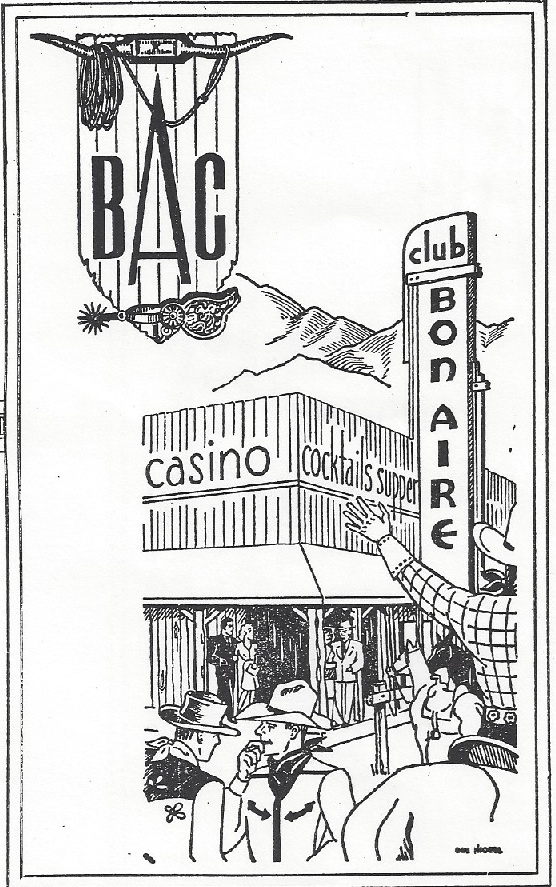
A Las Vegas newspaper reported, “Harvey Bynum and associates who have a large force of workers engaged in putting the finishing touches on their new Bon Aire Motel and night club, expect to have the place in readiness for the opening on July 1. It is located about 2 ½ miles south of Las Vegas on the Los Angeles highway.”[lxxv]
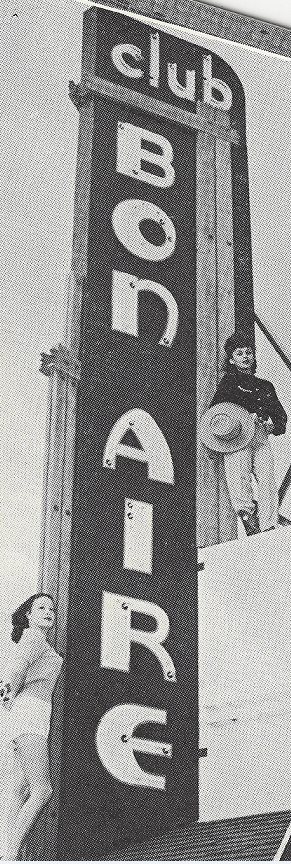
Bynum and his partners, Max Travis and Lester Welch opened the Club Bon Aire on U.S. Highway 91,Friday, July 13, 1945.
In making the announcement, the Bynum and his partners pointed out “the entire club is heavily carpeted and the entire motif is western” including “an art gallery of original western paintings.” [lxxvii]
Bynum described the operation as the “newest and one of the most lavish dinner clubs in southern Nevada.”
The owners added the Club Bon Aire would be offering an evening of the “old Nevada at its best.”
But, was that western wear or an evening gown and tuxedo. [lxxvi]
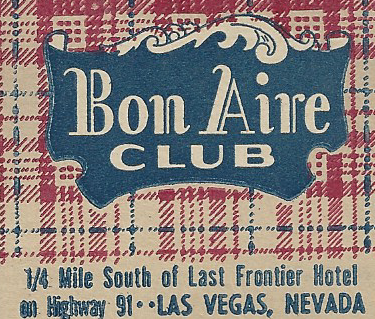
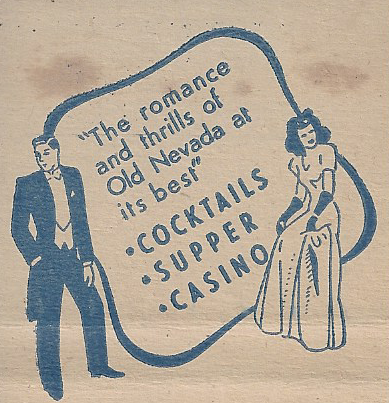 The club’s announcement also said the Bon Aire “rather than entertainment” would have a “long and luxurious bar and gaming casino.” [lxxviii]
The club’s announcement also said the Bon Aire “rather than entertainment” would have a “long and luxurious bar and gaming casino.” [lxxviii]
Bynum said the club in the near future would have adjacent to it, a poultry farm with a capacity of 10,000 chickens and a steady flow of 1500 chickens a week guaranteed.” [lxxix]
The announcement said “Bynum formerly operated the Dunes, the Yucca Club, and many other Las Vegas niteries. Formerly he operated the Breakers Sea Food Cafe in Oklahoma City, but has been in and out of Las Vegas for the past 25 years.” [lxxx]
From the beginning there was confusion. Was it the Club Bon Aire, or the Bon Aire Club was it western wear or evening wear and more important, who was in control? The partnership didn’t last long and soon Club Bon Aire was under the management of Sam Diamond. Diamond had worked with Travis in Hollywood. [lxxxi]
(Wonder if they also fought over using “de?” Old French, joke.)
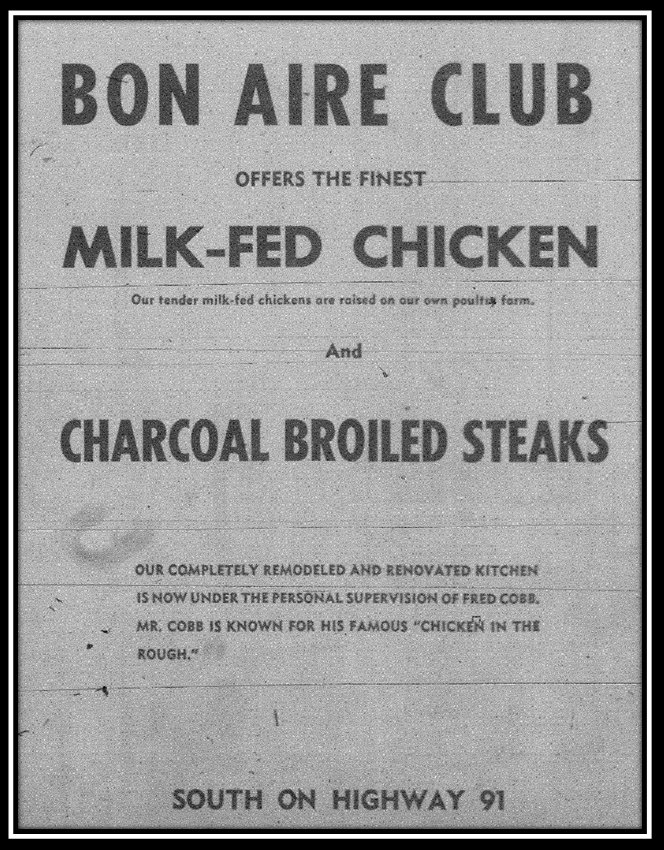
When Bynum left, the club would go through a series of operators and names. Fred O. Cobb would take over the “completely remodeled and renovated kitchen” to serve his “famous Chicken in the Rough.”
The Club Bon Aire became the Mondoray Club. Then late in 1947 it became Gene Austin’s Blue Heaven. This name last until October of 1949 when the club’s gambling license was denied.
Soon after leaving the Bon Aire, Bynum got involved in another western style club.
Bynum Connected to Kit Carson Club 1946
On Tuesday March 5, 1946, “Constructed in true western style, the Kit Carson club will open formally” according to a newspaper account.
The managers of the new resort included Bynum, George Frisbee (Frisby) and Dave Anderson. Frisby told reporters he was associated with a frozen food company in Los Angeles before coming to Las Vegas. Anderson said he was the past president of the Restaurant Association of Kansas and that he owned a café in that state.[lxxxii]
With a focus on food, the new resort, “about two miles from Las Vegas” had a bar and gaming operation. [lxxxiii]
Reported to have been built like a ranch house, the resort had a ceiling of heavy rustic timbers, a stone sea food bar, barbecue pit and “a novel bar.” What was “novel” about the bar was not publicized. [lxxxiv]
Six years later, Bynum filed suit against Frisby seeking his “share” of the profits from the sale of the Kit Carson.
Frisby sold the property and the new owners were building the Sands Hotel Casino.
The law suit provided details of the building of the Kit Carson. According to Bynum’s attorney, Ira Earl, “Bynum went to Frisby with the original idea to build the resort. Bynum secured the licenses, liquor and gambling for the Kit Carson. Frisby put up more than $60,000. Frisby and Anderson would own 80 percent of the operation, and Bynum got 20 percent plus a salary.”[lxxxv]
According to a suit filed by Earl, Bynum’s services consisted of setting up the business, and a verbal understanding that he would receive 20% of the profits in excess of Frisby’s $52,500 investment. [lxxxvi]
The suit charged Bynum, who was described at the time as a gambler, was “aced out” shortly after the club opened. Earl said “on the night the club opened Frisby wanted the license in his own name, to throw out Bynum.” The attorney said Frisby was successful in squeezing Bynum out of the operation. [lxxxvii]
When Bynum was pushed out of the Kit Carson, he took over the nearby “Diamond Horseshoe.”
Bynum Connected to the Las Vegas Stork Club March 1947
The “Diamond Horseshoe” was completely remodeled inside and out according to an announcement by Bynum on March 11, 1947. [lxxxviii]
The name of the resort was changed to the Stock Club.
The club was located on the east side of U.S. 91 about 3 miles south of the city limits.
In a newspaper story Bynum is described as a “veteran Las Vegas restaurant operator.” He said the tavern will feature full course miles with special emphasis on steaks and sea food entrees.
Bynum at “The New Las Vegas Stork Club” in June, 1947
A display advertisement in the June 7, 1947 issue of the Las Vegas Review Journal promotes “the re-opening” of the dining room. The advertisement also promotes the operation as “The New Las Vegas Stork Club,” with Bynum and Hal Davis listed as “your hosts.”[lxxxix]
The naming of the highway was in transition. Bynum’s advertisement uses both “Hiway 91,” and “on the strip” as location of the Stock Club. [xc]
What was Harvey Bynum’s next move?
When did Bynum leave stork club? Where did he go?
A check of Las Vegas telephone books reveals the following;
No listing for Bynum in 1952 telephone book
The April, 1953 Southern Nevada Telephone Directory shows Bynum residence at1137 South 15th Street.[xci]
There is no listing for Bynum in the April 1954, or the 1955 Las Vegas telephone directories.
More questions?
- What happened to his law suit in connection with the Kit Carson?
- What happened to the Las Vegas Stork Club?
- What happened to Harvey “Red” Bynum, described by the City of Las Vegas as “a notorious gaming figure and Davey Berman, Bugsy Siegel’s partner?” [xcii]
- What business was Bynum and Berman partners?
- Or what happened to Harvey Bynum newspaperman Charles Squired called one of the “favorites of Las Vegas home folks” and who helped “set the pattern for the great hotels and nightclubs of today.” [xciii]
- Other than James Stewart, who has seen Harvey?
Coming Soon more details
Any information on the whereabouts of Harvey Alman Bynum?
[i] https://files.lasvegasnevada.gov/planning/LV-High-School-Historic-District.pdf .
[ii] https://www.merriam-webster.com/dictionary/notorious.
[iii] http://www.dictionary.com/browse/notorious?s=t .
[iv] “Observations by Charles P. “Pop” Squires, July 11, 1953, Fabulous Las Vegas Magazine, page five.
[v] “Ninety-One Club to be Elaborate,” January 13, 1939, Las Vegas Age, page twelve.
[vi] “Observations by Charles P. “Pop” Squires, July 11, 1953, Fabulous Las Vegas Magazine, page five.
[vii] “Harvey Bynum to Open Night Spot,” February 6, 1945, Las Vegas Review Journal, page six.
[viii] “Kit Carson Club Open,” March 4, 1946, Las Vegas Review Journal, page two.
[ix] “Erie, Pennsylvania City Directory,” 1916, page 408.
[x] http://www.ark-ives.com/documenting/ww1/detail/default.aspx?sec=ww1_discharge_records&id=1621
[xi] “City Briefs, February 2, 1925, The Ada Evening News, Ada, Oklahoma, page three.
[xii] “Bon AIRE to Open Friday,” July 12, 1945, Las Vegas Review Journal, page thirteen.
[xiii] Untitled society column, June 27, 1926, The Ada Evening News, Oklahoma, page three.
[xiv] “City News,” August 17, 1928, San Luis Obispo (California) Daily Telegram, page six.
[xv] “Valley in Mountains Sees Raid,” June 24, 1930, Los Angeles Times, page nine.
[xvi] “Valley in Mountains Sees Raid,” June 24, 1930, Los Angeles Times, page nine.
[xvii] “Gambling Tables “Properties,” July 21, 1930, Los Angeles Times, page six.
[xviii] “Pair O’ Dice Attracts Many on Fourth,” July 5, 1931, Las Vegas Age, Page five.
[xix] “Pair O’ Dice Closes for Remodeling,” September 18, 1931, Las Vegas Evening Review-Journal, page three.
[xx] “Harvey Bynum to Open Night Spot,” February 6, 1945, Las Vegas Review Journal, page six.
[xxi] “Pair O’ Dice Will reopen,” December 23, 1931, Las Vegas Age, page four.
[xxii] Pair O Dice display advertisement, January 5, 1932, Las Vegas Age, Page four.
[xxiii] Display Advertisement, Pair ‘O Dice, January 15, 1932, Las Vegas, Evening Review Journal Page four.
[xxiv] Display Advertisement, Pair O Dice Casino, January 22, 1932, Las Vegas Age, Page three.
[xxv] “Pair O Dice is being enlarged,” February 3, 1932, Las Vegas Evening Review-Journal, Page four.
[xxvi] “Pair O Dice is being enlarged,” February 3, 1932, Las Vegas Evening Review-Journal, Page four.
[xxvii] “Pair O Dice is being enlarged,” February 3, 1932, Las Vegas Evening Review-Journal, Page four.
[xxviii] “Pair O’ Dice under Lease,” March 1, 1932, Las Vegas Age, Page two.
[xxix] “Pair O’ Dice under Lease,” March 1, 1932, Las Vegas Age, Page two.
[xxx] Display advertisement Pair O’ Dice Casino and Night Club,” March 8, 1932, Las Vegas Age, page four, “Death Valley Live Doings,” June 9, 1939, Las Vegas Age, page two.
[xxxi] “Pair O’ Dice Shuts Doors Yesterday,” January 4, 1933, Las Vegas Evening Review-Journal, page one.
[xxxii] ’12 Booze Joints Are Hit in Dry Raids by Prohis,” December 1, 1932, Las Vegas Age, Page one, “9 Vegas Rum Joints Given Abatements,” January 10, 1933, Las Vegas Evening Review-Journal, page one.
[xxxiii] “Set Opening Date for Inn,” November 13, 1935, The Arcadia Tribune, California, Page one.
[xxxiv] “Set Opening Date for Inn,” November 13, 1935, The Arcadia Tribune, California, Page one.
[xxxv] “Set Opening Date for Inn,” November 13, 1935, The Arcadia Tribune, California, Page one.
[xxxvi] “Arcadia Police Swoop Down on Santa Anita Inn,” February 28, 1936, The Arcadia Tribune, California, page one.
[xxxvii] “Arcadia Police Swoop Down on Santa Anita Inn,” February 28, 1936, The Arcadia Tribune, California, page one.
[xxxviii] “Arcadia Police Swoop Down on Santa Anita Inn,” February 28, 1936, The Arcadia Tribune, California, page one.
[xxxix] “Arcadia Police Swoop Down on Santa Anita Inn,” February 28, 1936, The Arcadia Tribune, California, page one.
[xl] “Games Raid Traps Two,” February 9, 1935, Los Angeles Times, Page B12.
[xli] “Arcadia Police Swoop Down on Santa Anita Inn,” February 28, 1936, The Arcadia Tribune, California, page one.
[xlii] “Observations,” by Charles “Pop” Squires, July 11, 1953, Fabulous Las Vegas Magazine, page five.
[xliii] “Observations,” by Charles “Pop” Squires, July 11, 1953, Fabulous Las Vegas Magazine, page five.
[xliv]
[xlv] “Ninety-One Club to be Elaborate,” January 13, 1939, Las Vegas Age, page twelve.
[xlvi] “Ninety-One Club to be Elaborate,” January 13, 1939, Las Vegas Age, page twelve.
[xlvii] “91 Club to Open Doors This Evening,” March 15, 1939, Las Vegas Evening Review Journal, Page three.
[xlviii] “91 Club to Open Doors This Evening,” March 15, 1939, Las Vegas Evening Review Journal, Page three.
[xlix] “Society,” March 16, 1939, Las Vegas Evening Review Journal, page two.
[l] “Society,” March 16, 1939, Las Vegas Evening Review Journal, page two.
[li] “Society,” March 16, 1939, Las Vegas Evening Review Journal, page two.
[lii] “Red” Bynum Buys Cactus Garden, May 19, 1939, Las Vegas Age, page six.
[liii] “Red” Bynum Buys Cactus Garden, May 19, 1939, Las Vegas Age, page six.
[liv] “Red” Bynum Buys Cactus Garden, May 19, 1939, Las Vegas Age, page six.
[lv] “Red” Bynum Buys Cactus Garden, May 19, 1939, Las Vegas Age, page six.
[lvi] “Death Valley Living Doings,” June 9, 1939, Las Vegas Age, Page two.
[lvii] “Death Valley Living Doings,” June 9, 1939, Las Vegas Age, Page two.
[lviii] “Death Valley Living Doings,” June 9, 1939, Las Vegas Age, Page two.
[lix] “Bynum Sells out at Yucca Club,” November 18, 1939, Las Vegas Evening Review Journal, page three.
[lx] Display Advertisement the Dunes, December 2, 1939, Las Vegas Evening Review Journal, page three.
[lxi] “New Night Club to Open Saturday,” November 29, 1939, Las Vegas Evening Review-Journal, page five.
[lxii] “New Night Club to Open Saturday,” November 29, 1939, Las Vegas Evening Review-Journal, page five.
[lxiii] Display advertisement “The Dunes,” November 29, 2019, Las Vegas Review Journal, page four.
[lxiv] “New Night Club to Open Saturday,” November 29, 1939, Las Vegas Evening Review-Journal, page five.
[lxv] Display advertisement, The Dunes, December 1, 1939, Las Vegas Evening Review Journal, page four.
[lxvi] Display advertisement The Dunes, December 2, 1939, Las Vegas Evening Review Journal, page three.
[lxvii] Display advertisement, The Dunes Cabaret, February 2, 1940, Las Vegas Review Journal, page.
[lxviii] Telephone Directory, 1939-1940, Southern Nevada Telephone Company, page six.
[lxix] “Boulder Echo,” 1941, Las Vegas High School, page twenty six.
[lxx] “Bon Aire about set for opening,” June 23, 1945, Las Vegas Review Journal, page three.
[lxxi] “Five Men Arrested in Raid on Sunset Strip Night Club,” February 23, 1942, Los Angeles Times, Page eight.
[lxxii] “Five Men Arrested in Raid on Sunset Strip Night Club,” February 23, 1942, Los Angeles Times, Page eight.
[lxxiii] “Five Men Arrested in Raid on Sunset Strip Night Club,” February 23, 1942, Los Angeles Times, Page eight.
[lxxiv] “Night Club Raids Result in Fines,” March 21, 1942, Los Angeles Times, Page five.
[lxxv] “Bon Aire about set for opening,” June 23, 1945, Las Vegas review Journal, page three.
[lxxvi] “Bon AIRE to Open Friday,” July 12, 1945, Las Vegas Review Journal, page thirteen.
[lxxvii] “Bon AIRE to Open Friday,” July 12, 1945, Las Vegas Review Journal, page thirteen.
[lxxviii] “Bon AIRE to Open Friday,” July 12, 1945, Las Vegas Review Journal, page thirteen.
[lxxix] “Bon AIRE to Open Friday,” July 12, 1945, Las Vegas Review Journal, page thirteen.
[lxxx] “Bon AIRE to Open Friday,” July 12, 1945, Las Vegas Review Journal, page thirteen.
[lxxxi] “Bon AIRE to Open Friday,” July 12, 1945, Las Vegas Review Journal, page thirteen.
[lxxxii] “Kit Carson Club Open,” March 4, 1946, Las Vegas Review Journal, page two.
[lxxxiii] “Kit Carson Club Open,” March 4, 1946, Las Vegas Review Journal, page two.
[lxxxiv] “Kit Carson Club Open,” March 4, 1946, Las Vegas Review Journal, page two.
[lxxxv] “Freedman License Fight Seen,” September, 5, 1952, Las Vegas Review Journal, page one.
[lxxxvi] “Freedman License Fight Seen,” September, 5, 1952, Las Vegas Review Journal, page one.
[lxxxvii] “Freedman License Fight Seen,” September, 5, 1952, Las Vegas Review Journal, page one.
[lxxxviii] “Stork Club Will Open Saturday,” March 11, 1947, Las Vegas Review Journal, page four.
[lxxxix] Display advertisement The Stork Club, June 7, 1947, Las Vegas Review Journal, page fix.
[xc] Display advertisement The Stork Club, June 7, 1947, Las Vegas Review Journal, page fix.
[xci] “Southern Nevada Telephone Directory, April 1953, Southern Nevada Telephone Company, page14.
[xcii] https://files.lasvegasnevada.gov/planning/LV-High-School-Historic-District.pdf .
[xciii] “Observations by Charles P. “Pop” Squires, July 11, 1953, Fabulous Las Vegas Magazine, page five.

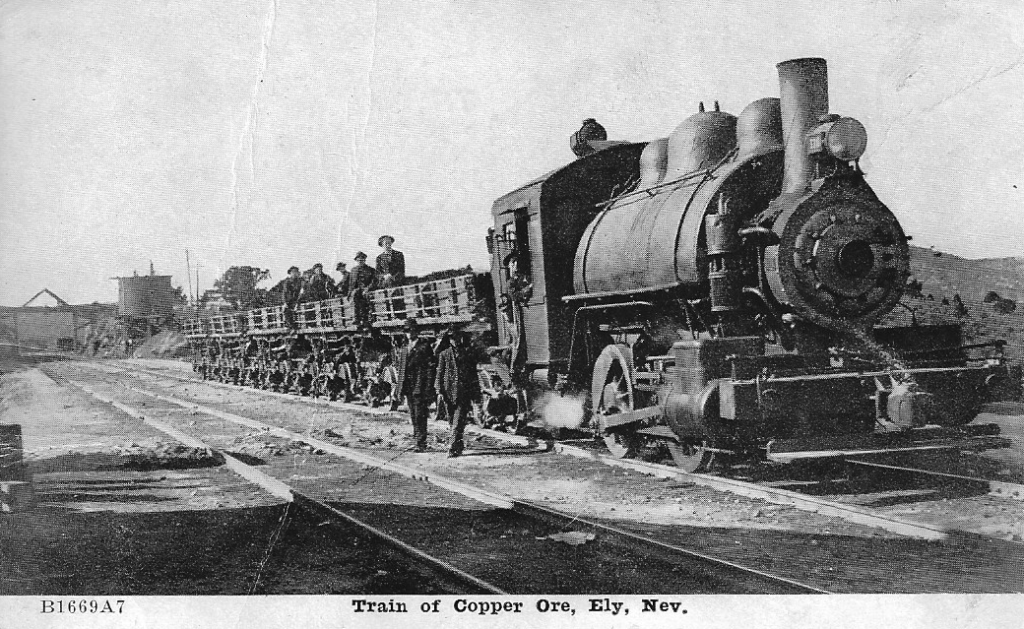

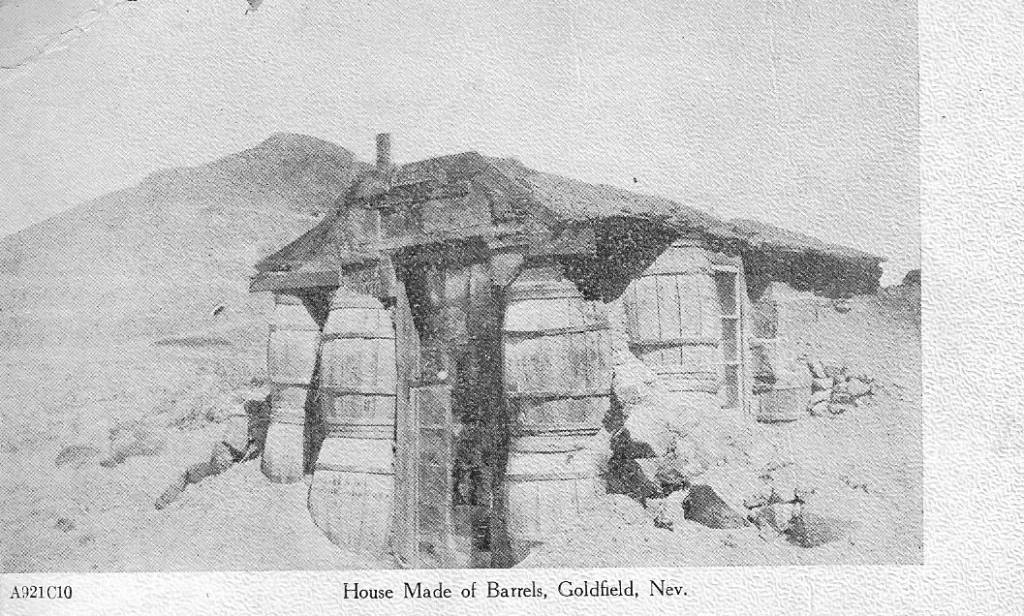

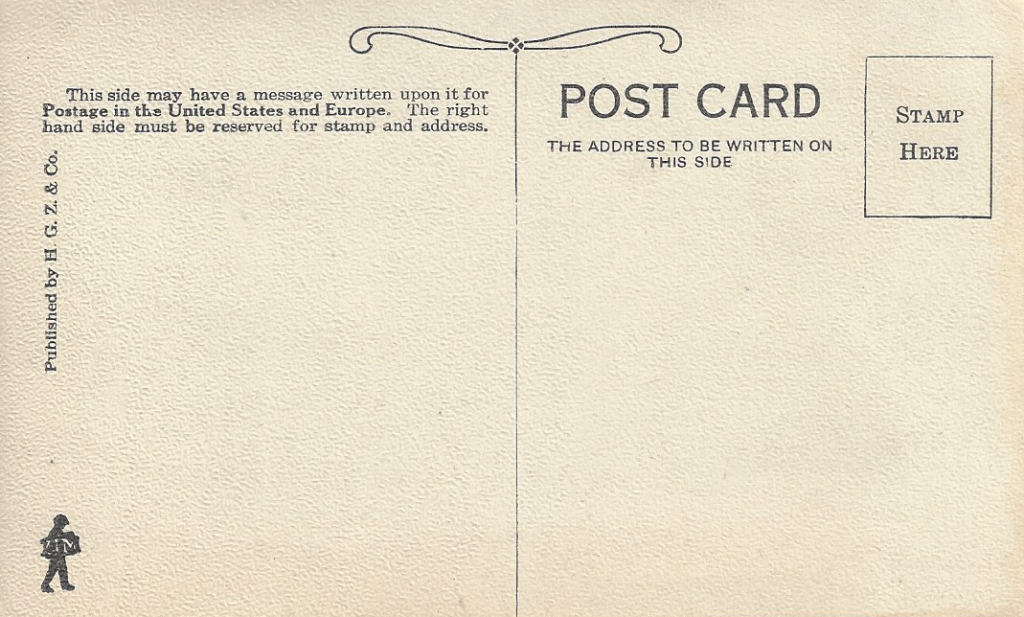
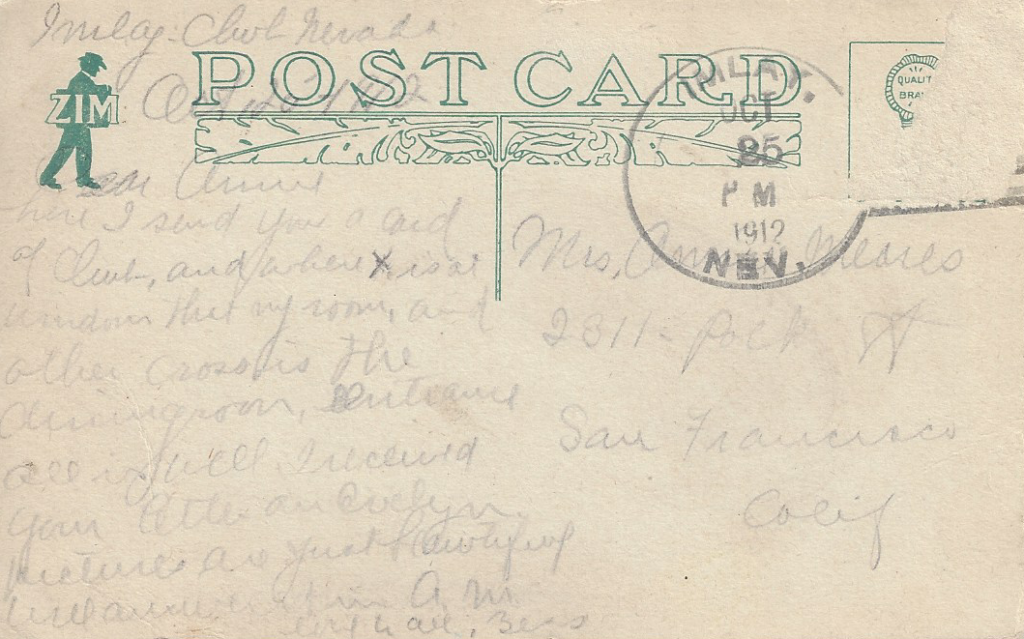
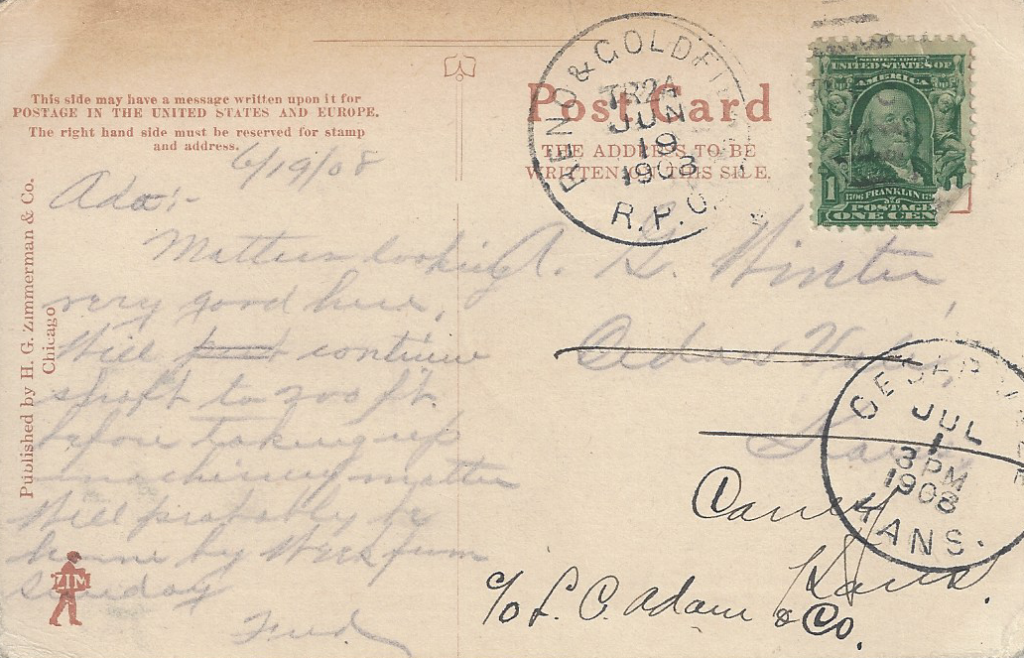
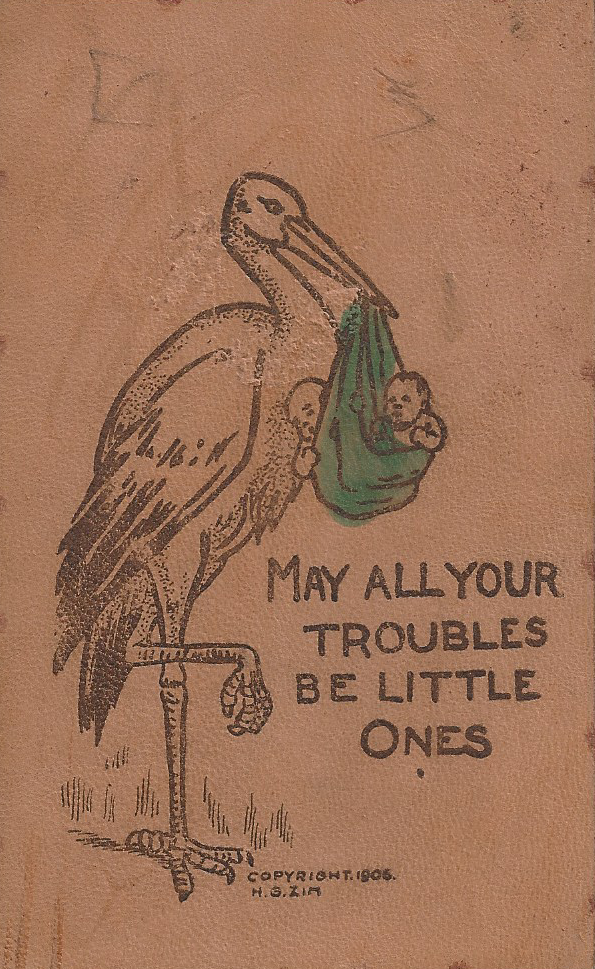 Based in Chicago, Illinois, late in 1906 or early in 1907 Zimmerman opened a west coast office in San Francisco.
Based in Chicago, Illinois, late in 1906 or early in 1907 Zimmerman opened a west coast office in San Francisco.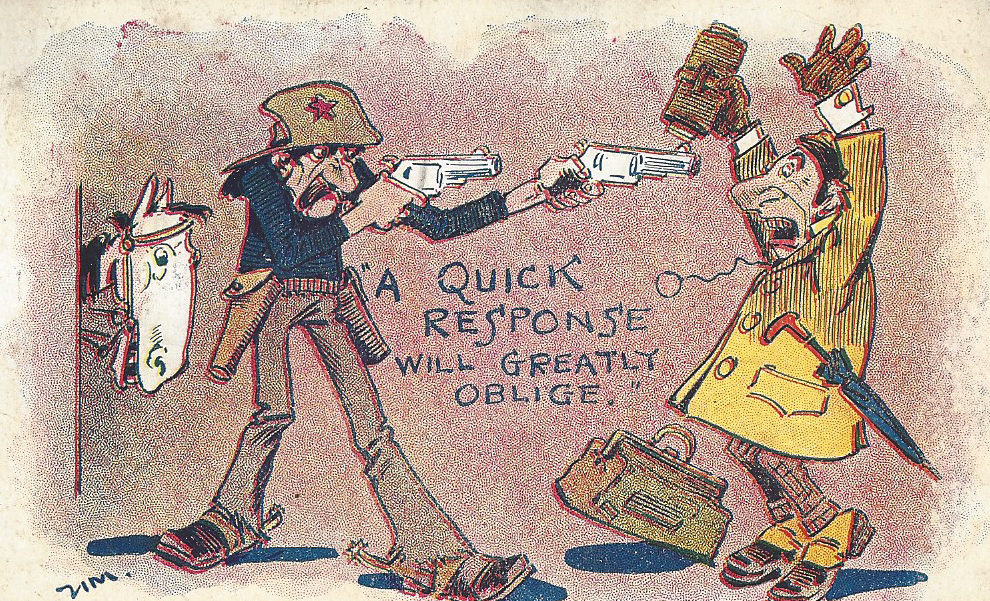
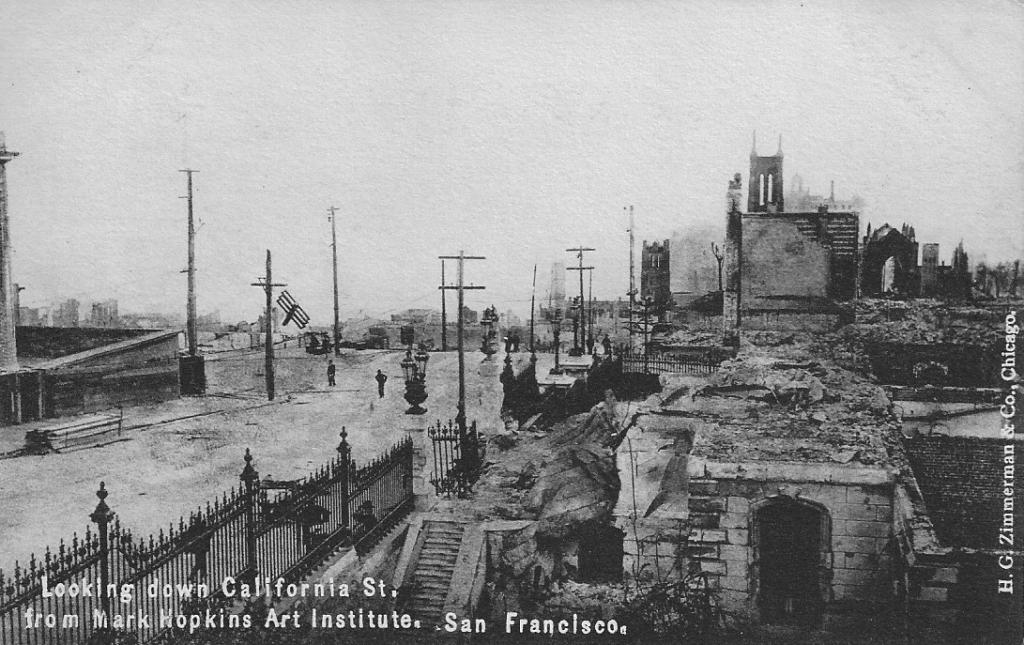
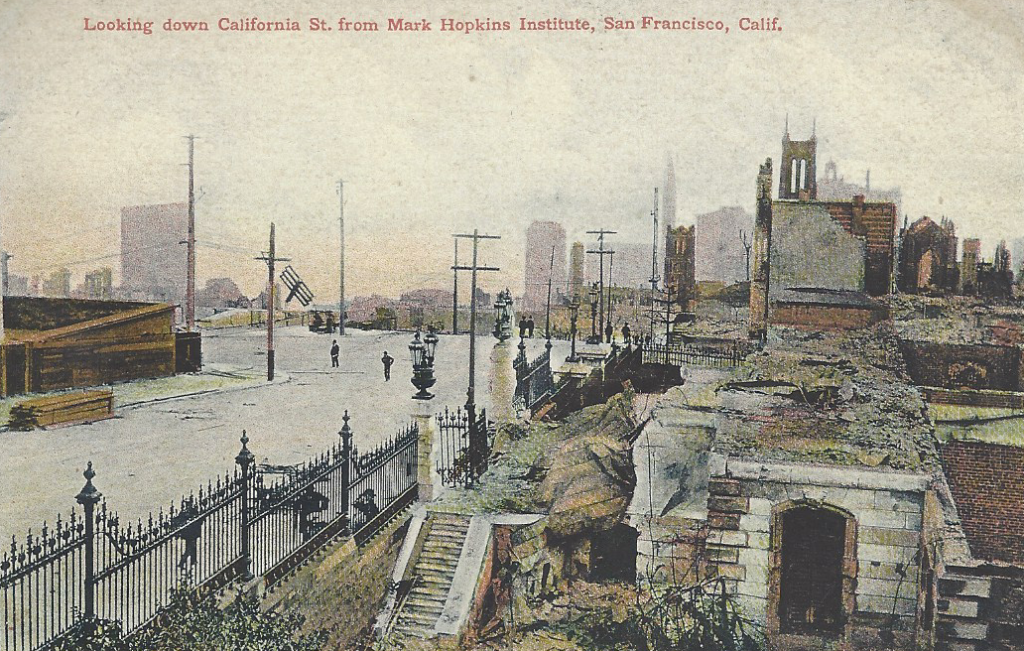
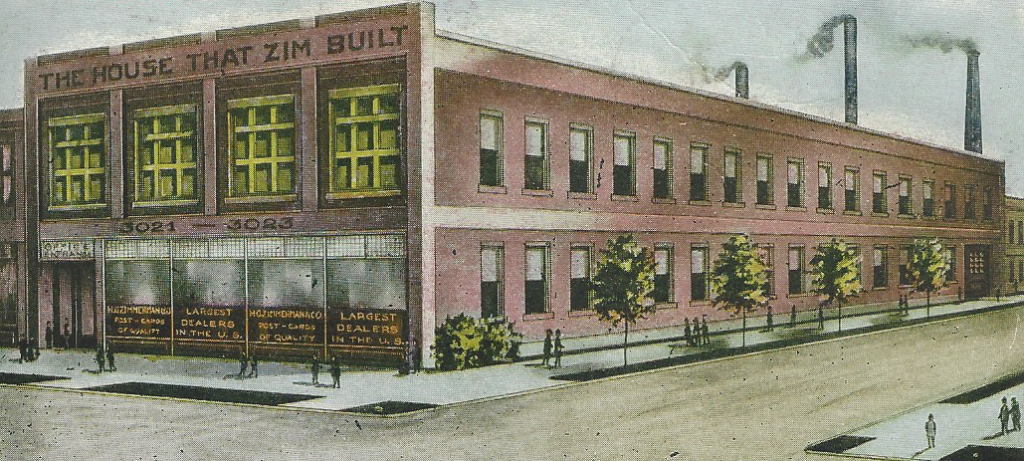
 Based on classified newspaper advertisement Zimmerman placed in newspapers around the country it is clear that much of his business was based on the work of “side pocket” aka “vest pocket” salesmen. (Anaconda Montana Standard, 2-21-1909)
Based on classified newspaper advertisement Zimmerman placed in newspapers around the country it is clear that much of his business was based on the work of “side pocket” aka “vest pocket” salesmen. (Anaconda Montana Standard, 2-21-1909)

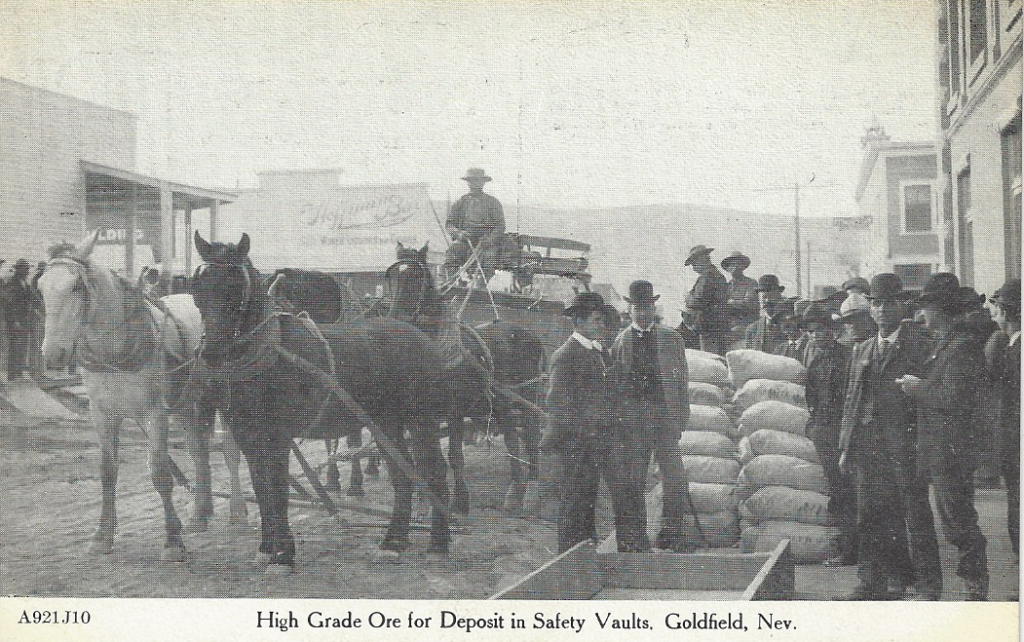
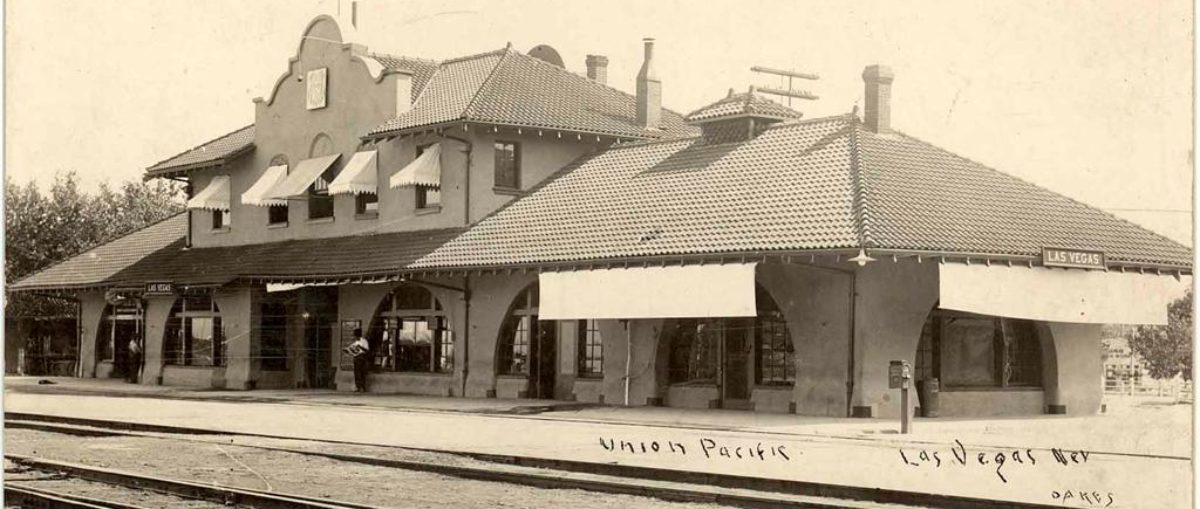
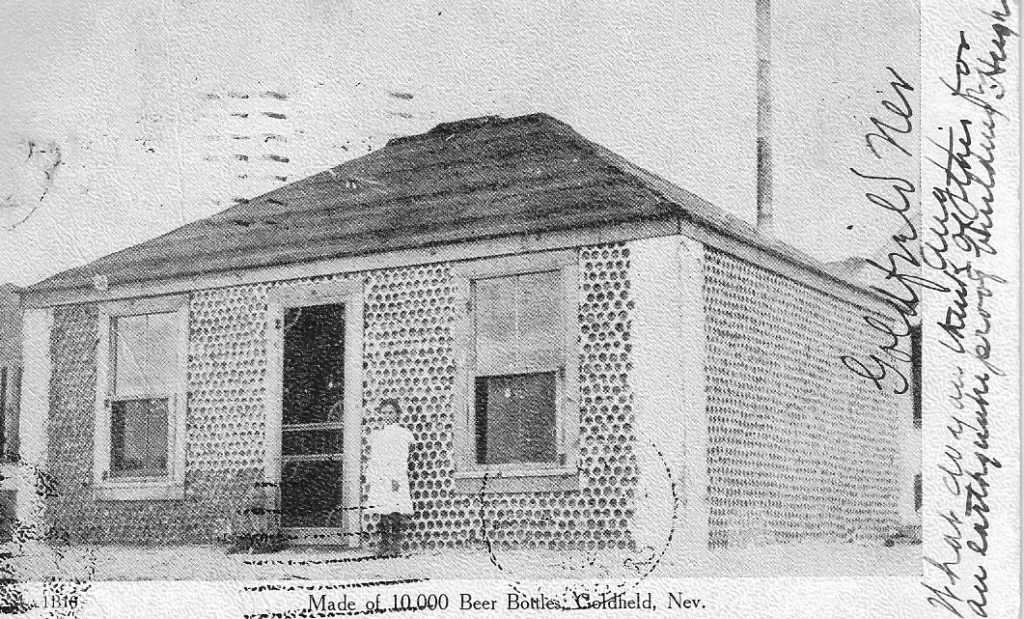

 Staying with desert plants, Bynum changed the name from Cactus Gardens to the Yucca Club.
Staying with desert plants, Bynum changed the name from Cactus Gardens to the Yucca Club.



 The club’s announcement also said the Bon Aire “rather than entertainment” would have a “long and luxurious bar and gaming casino.”
The club’s announcement also said the Bon Aire “rather than entertainment” would have a “long and luxurious bar and gaming casino.” 
